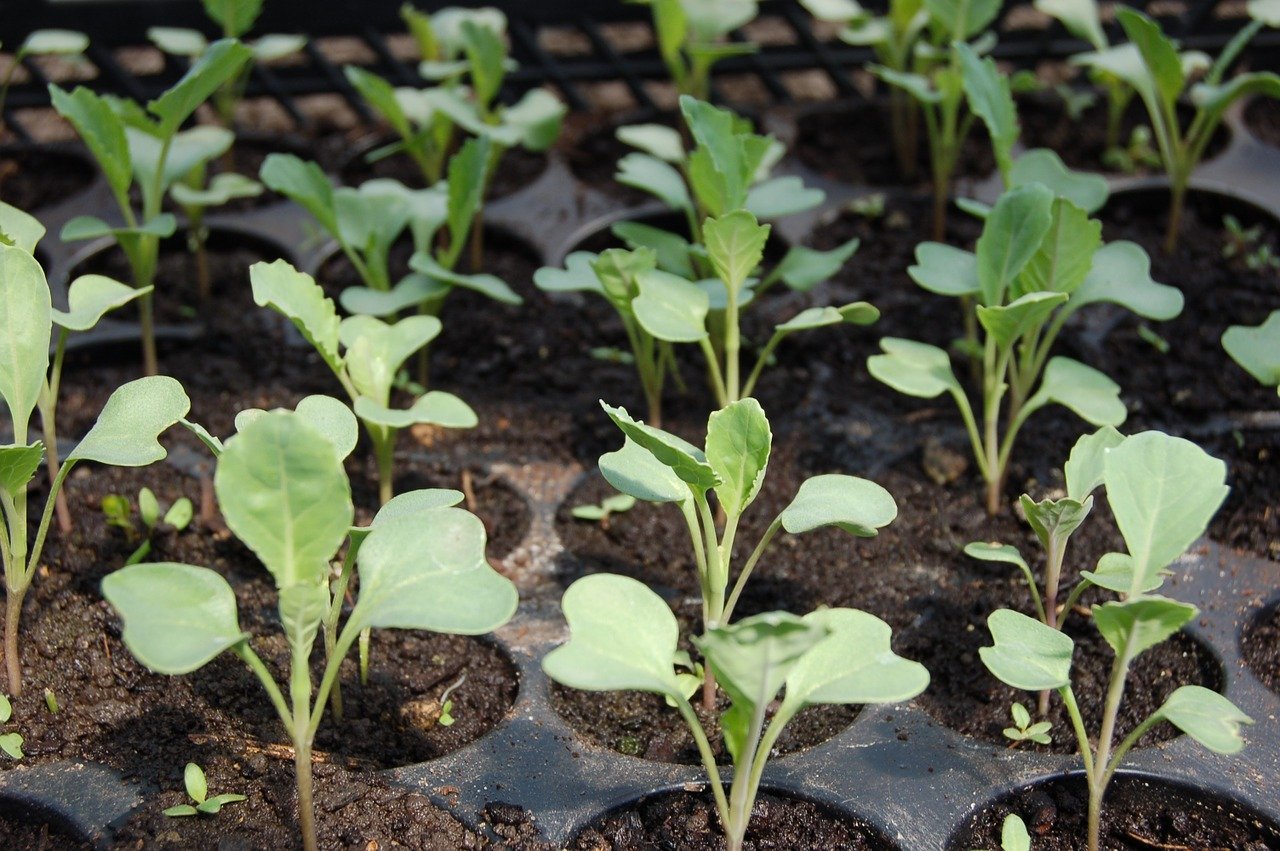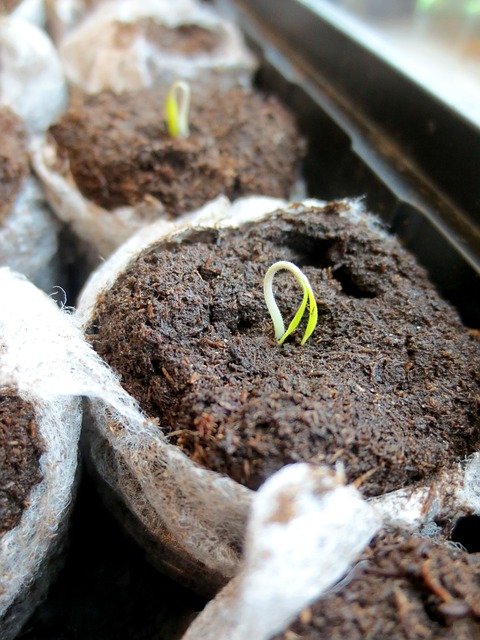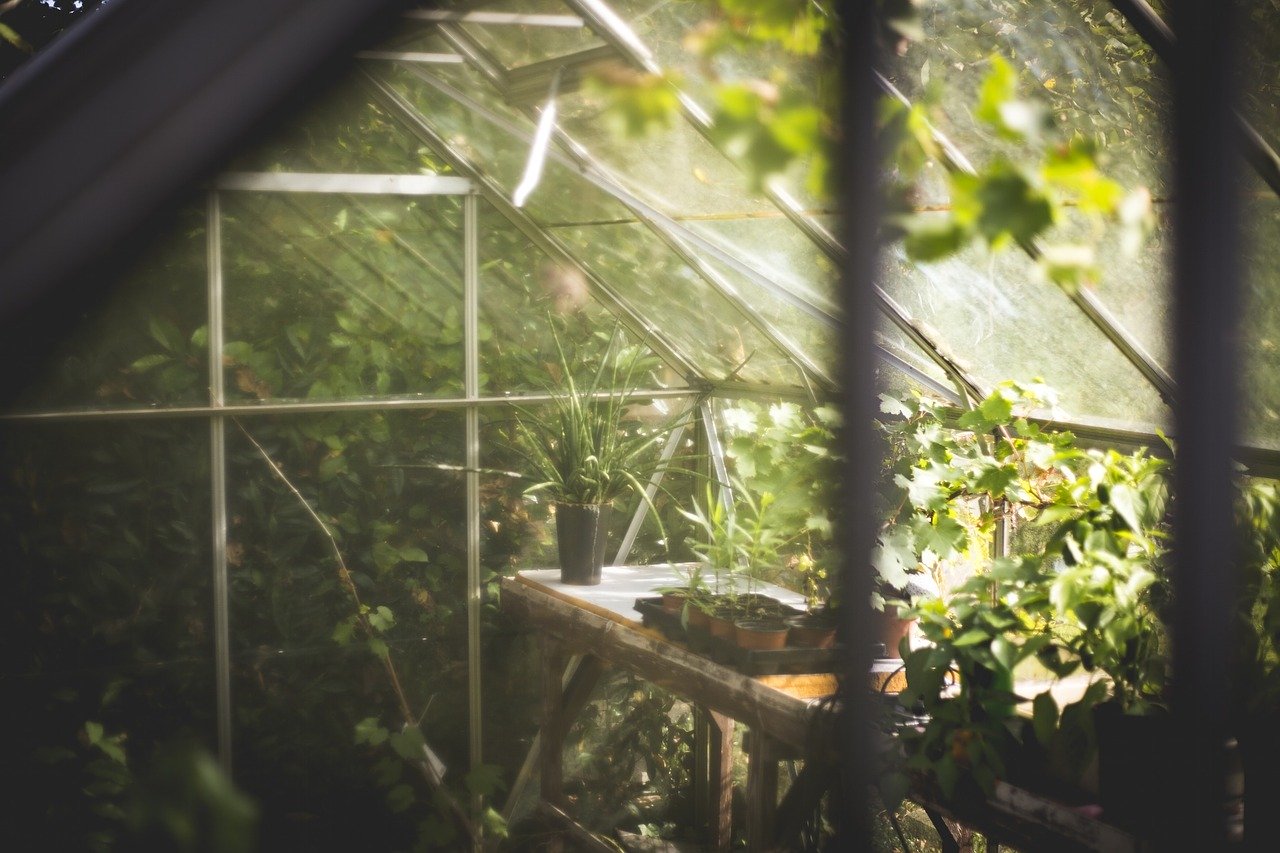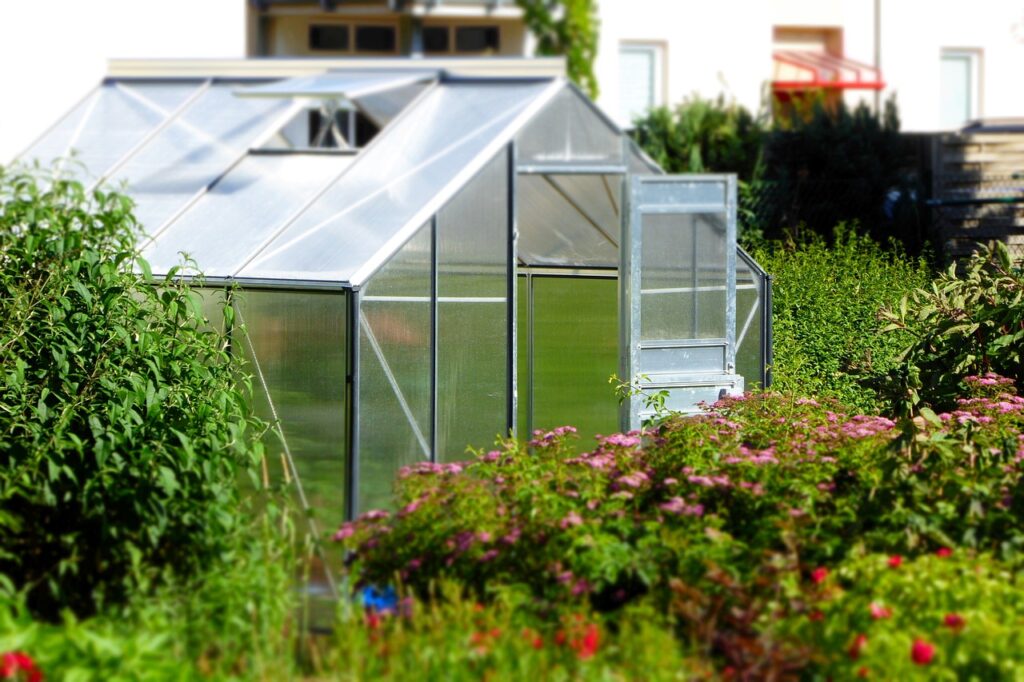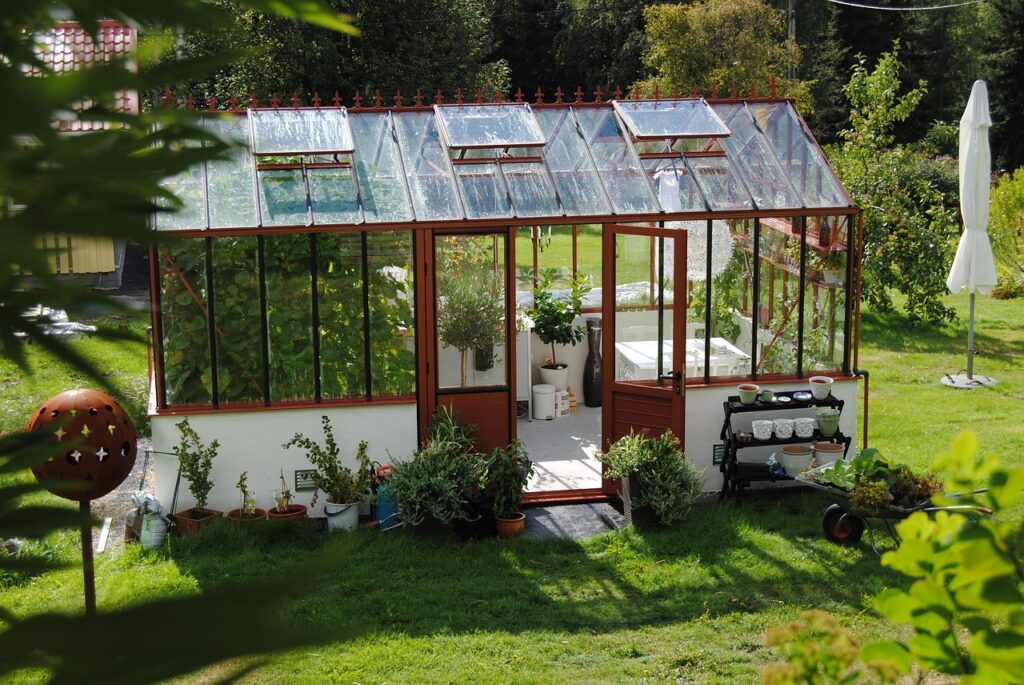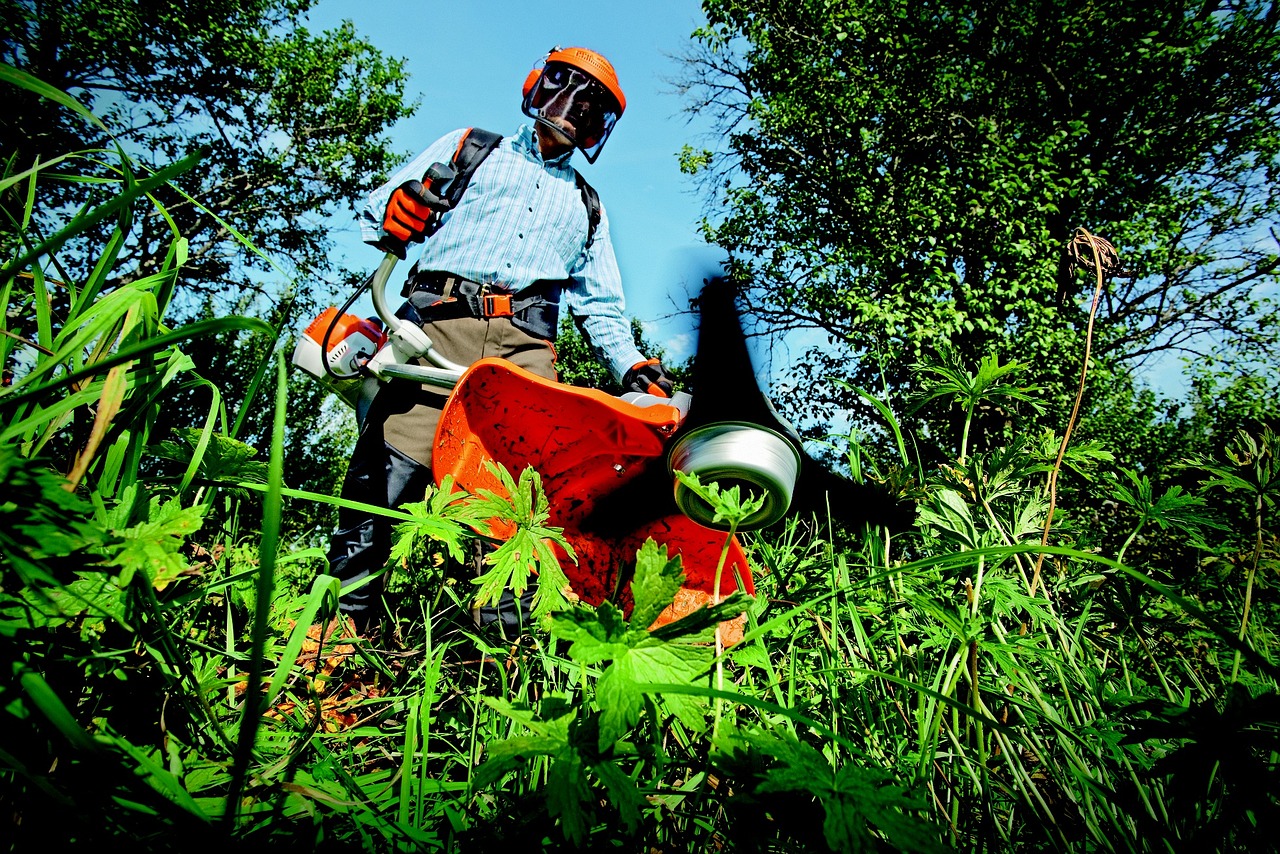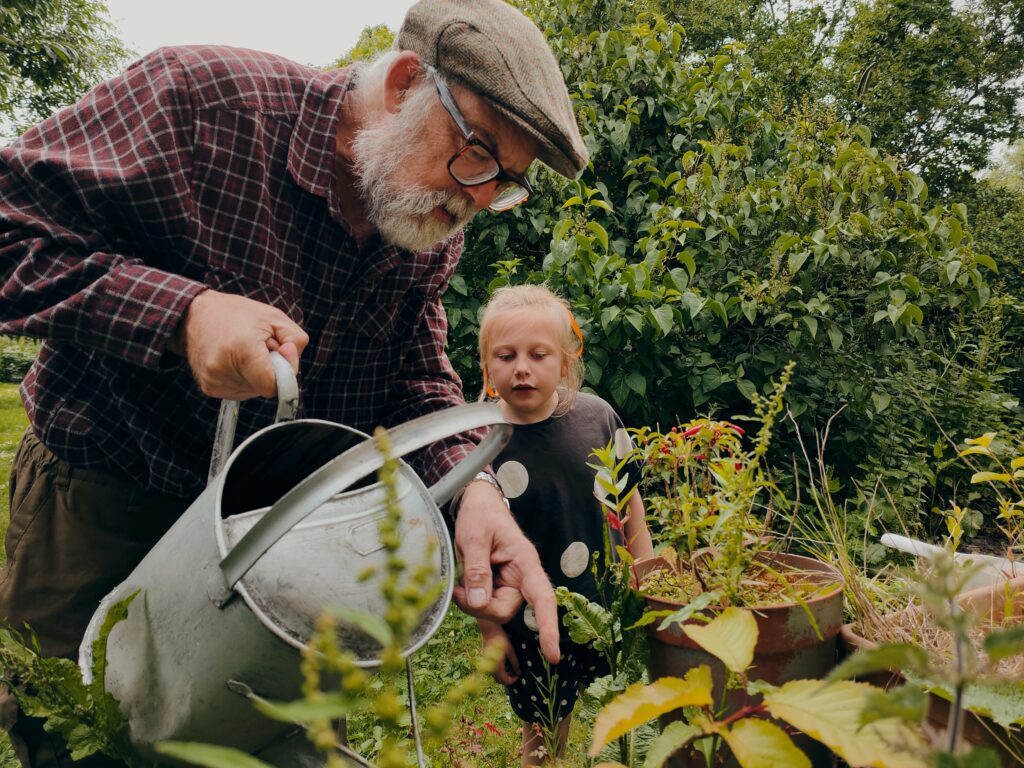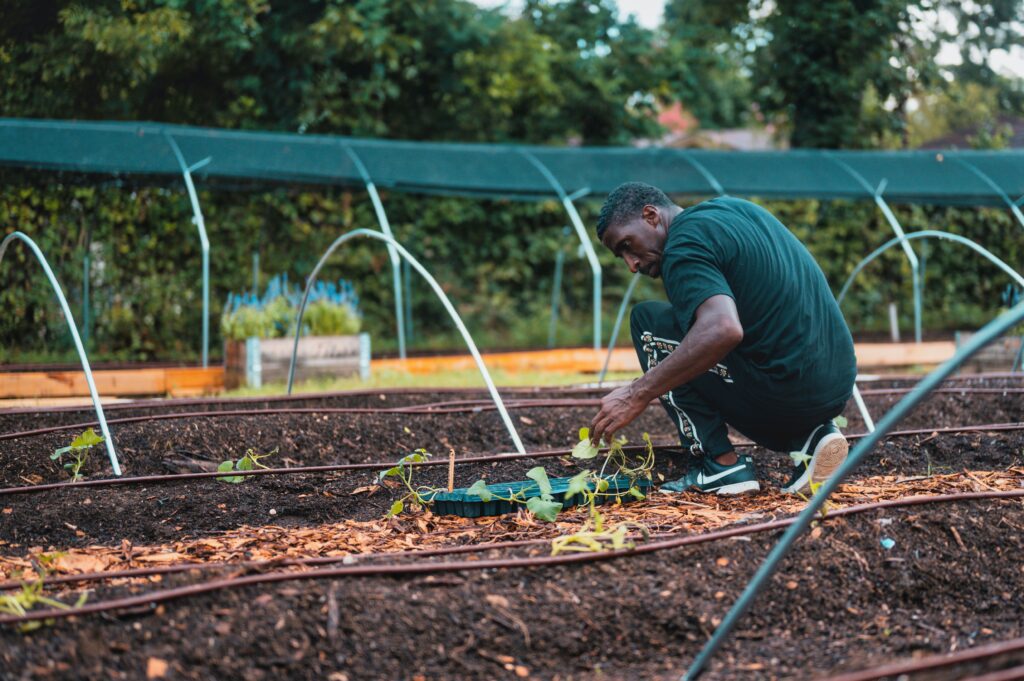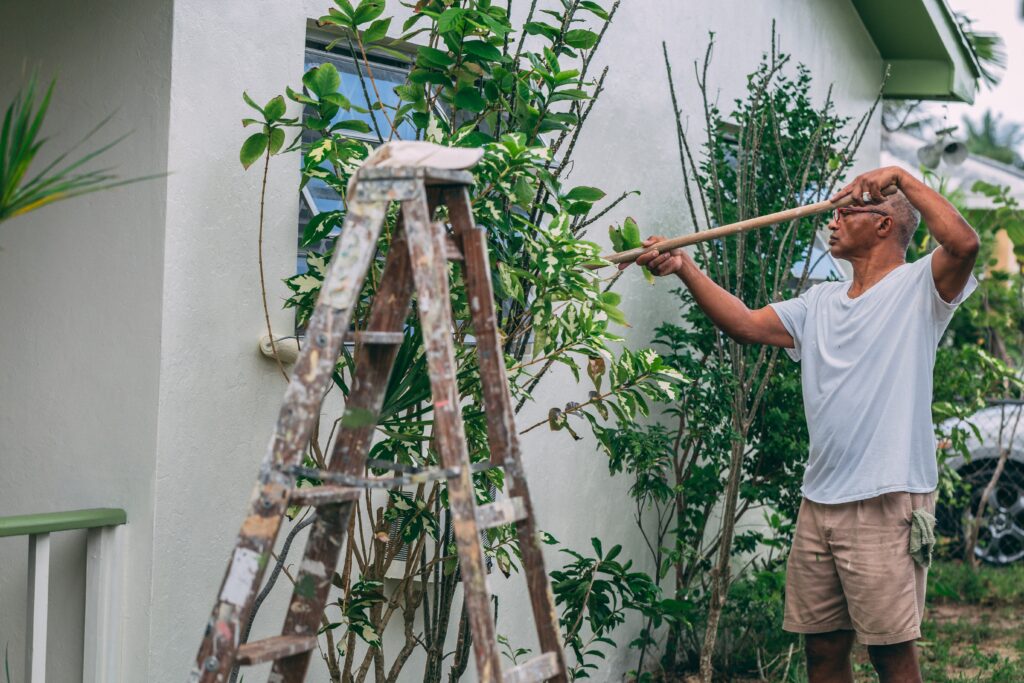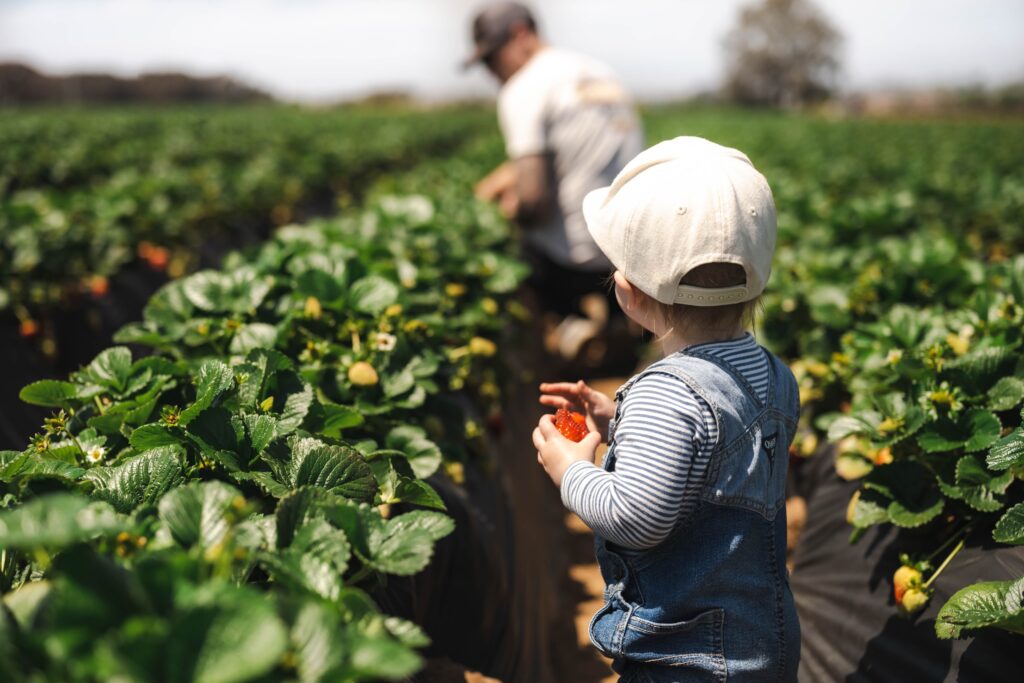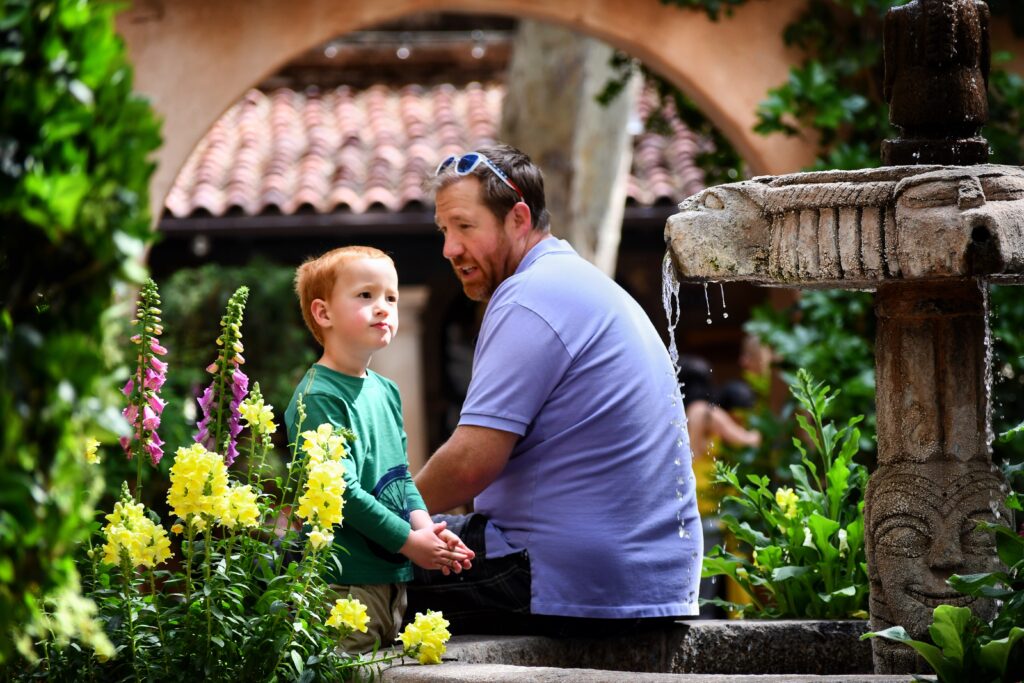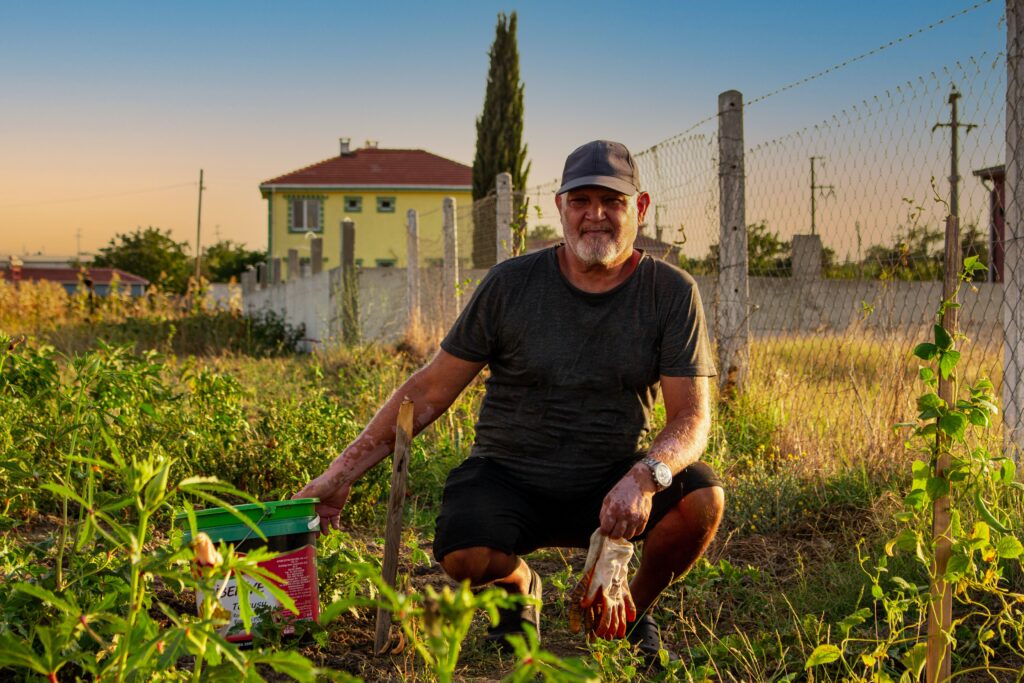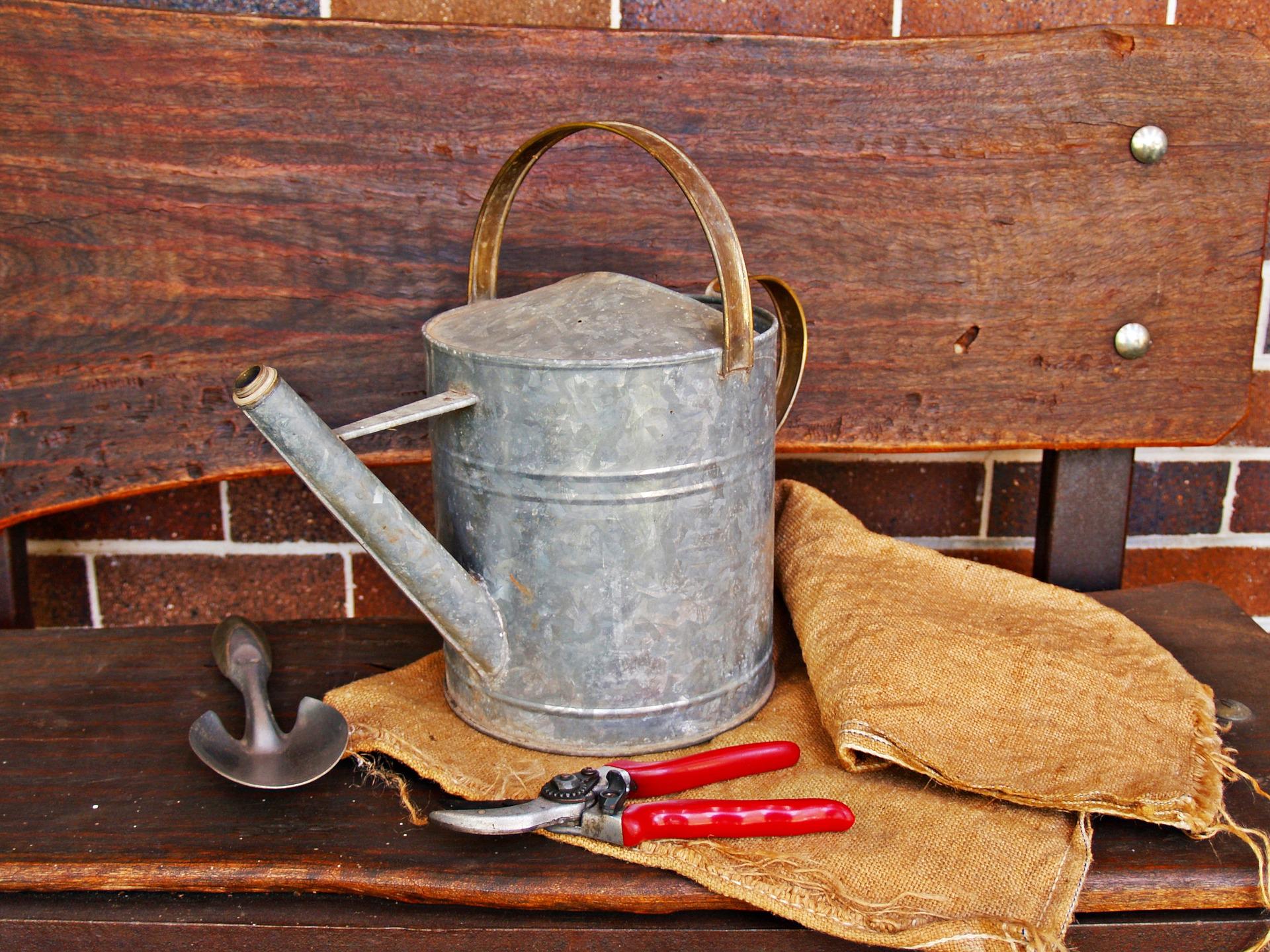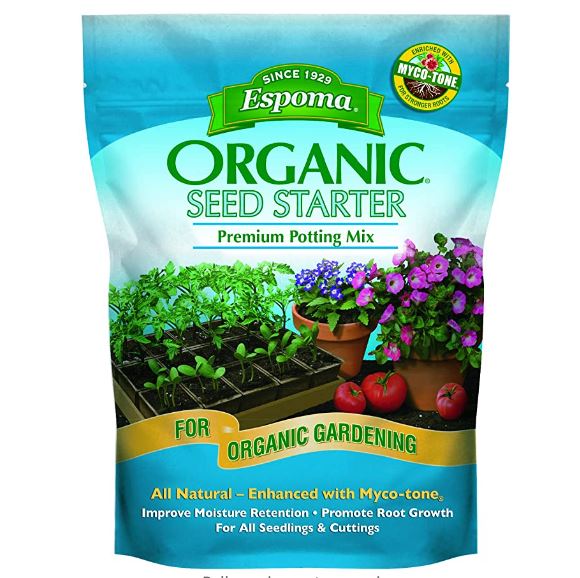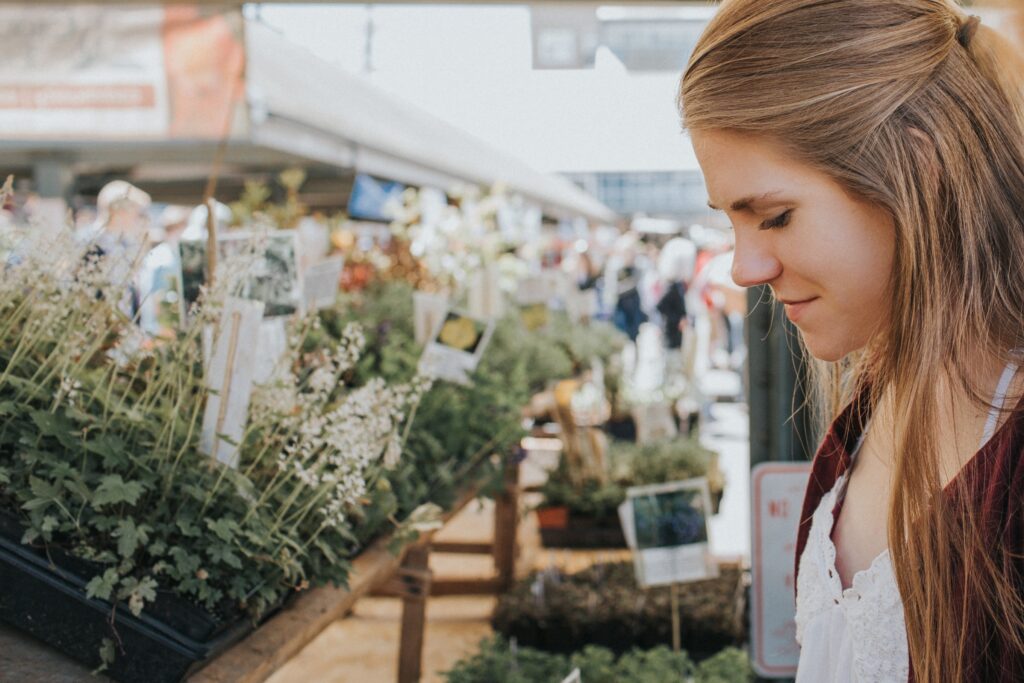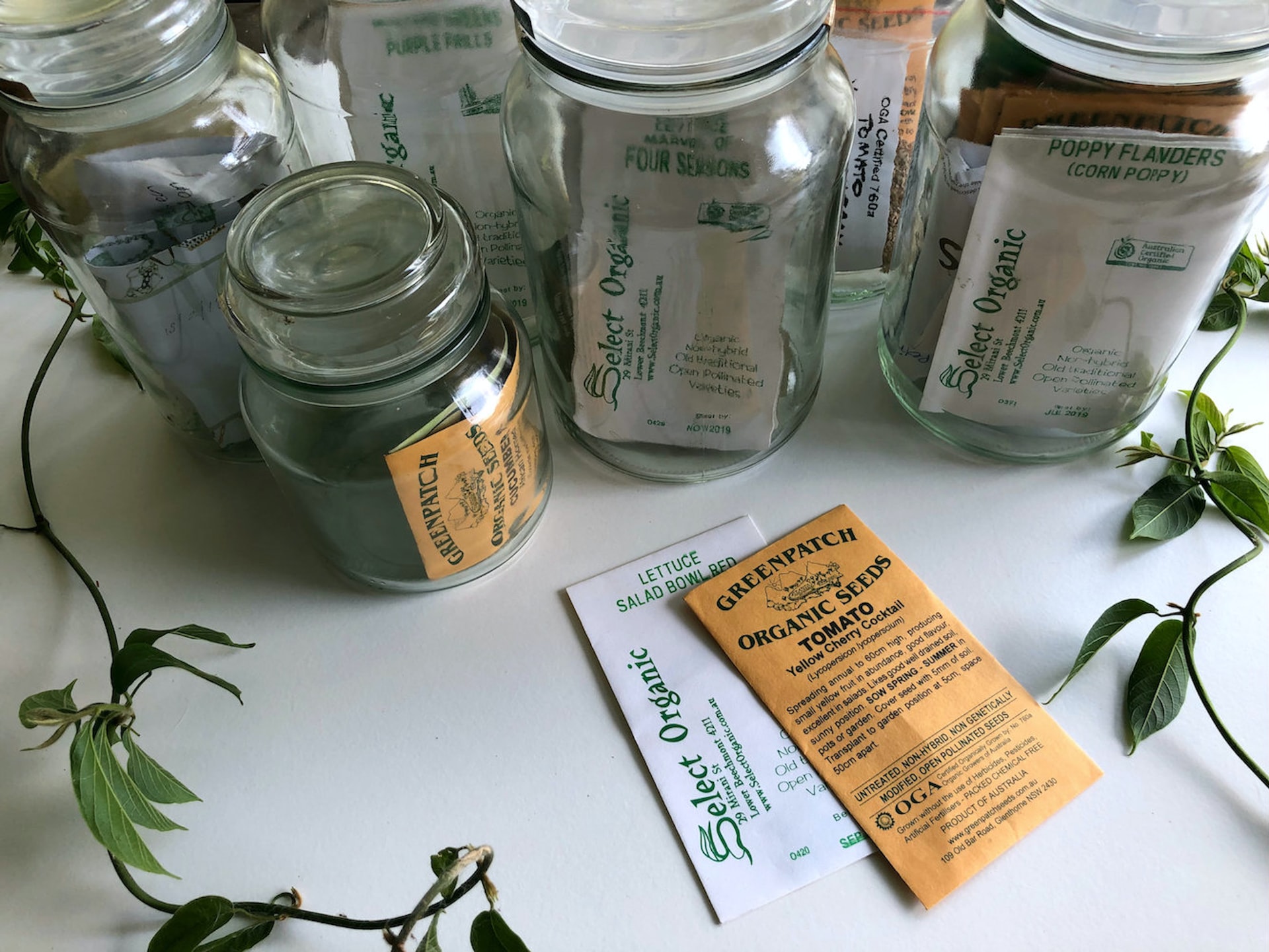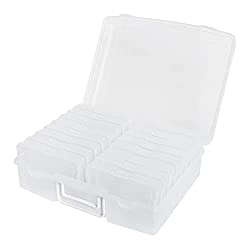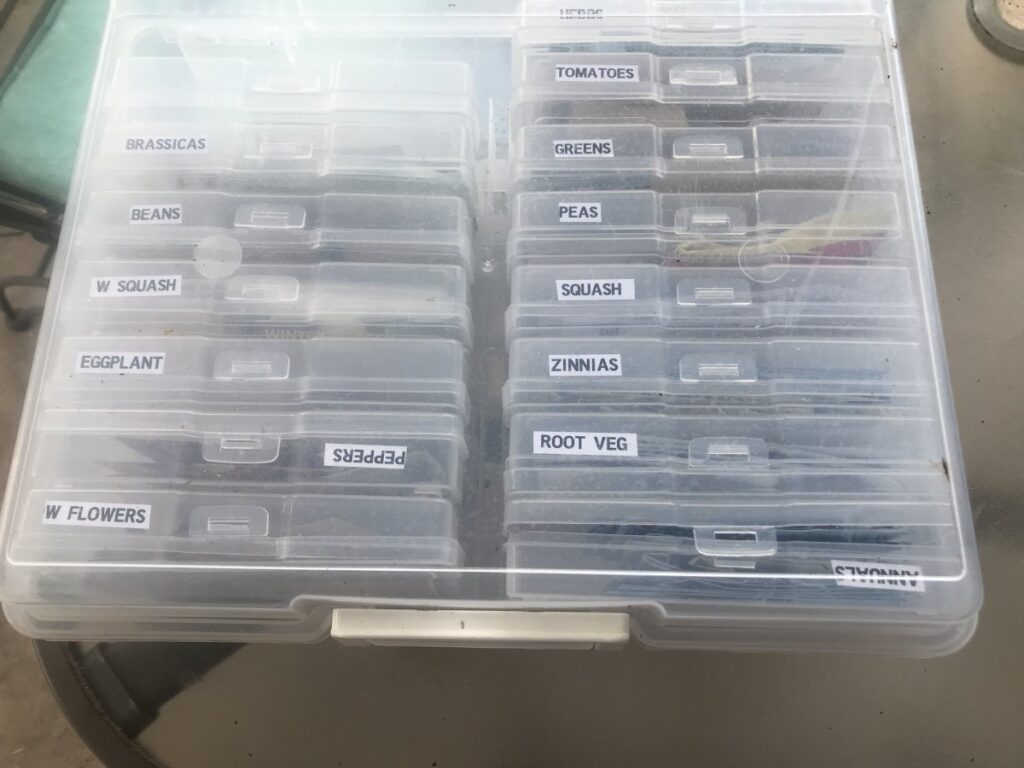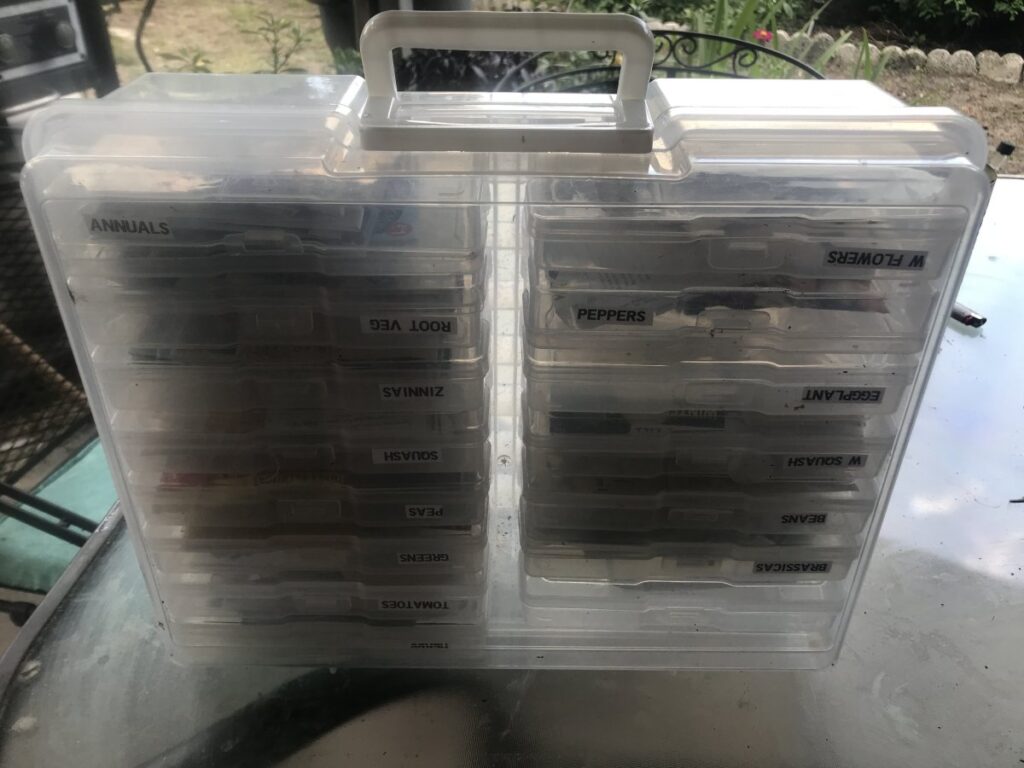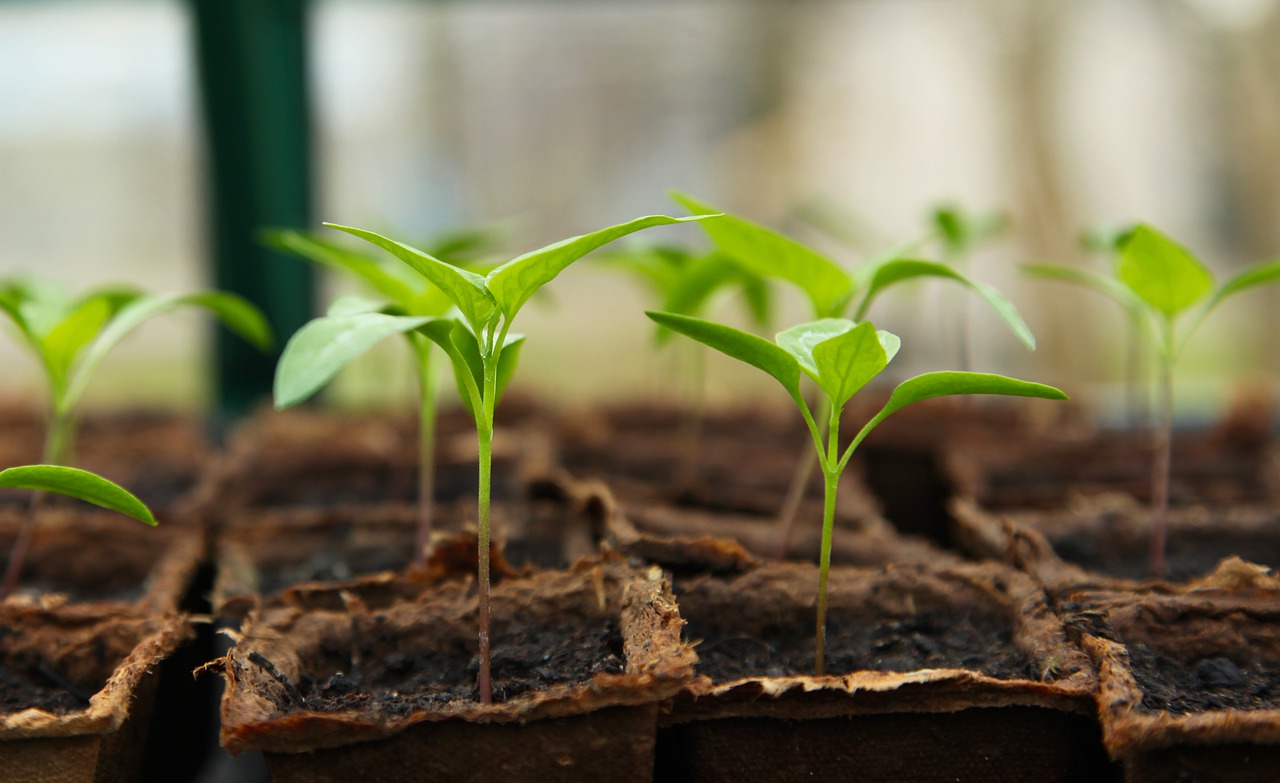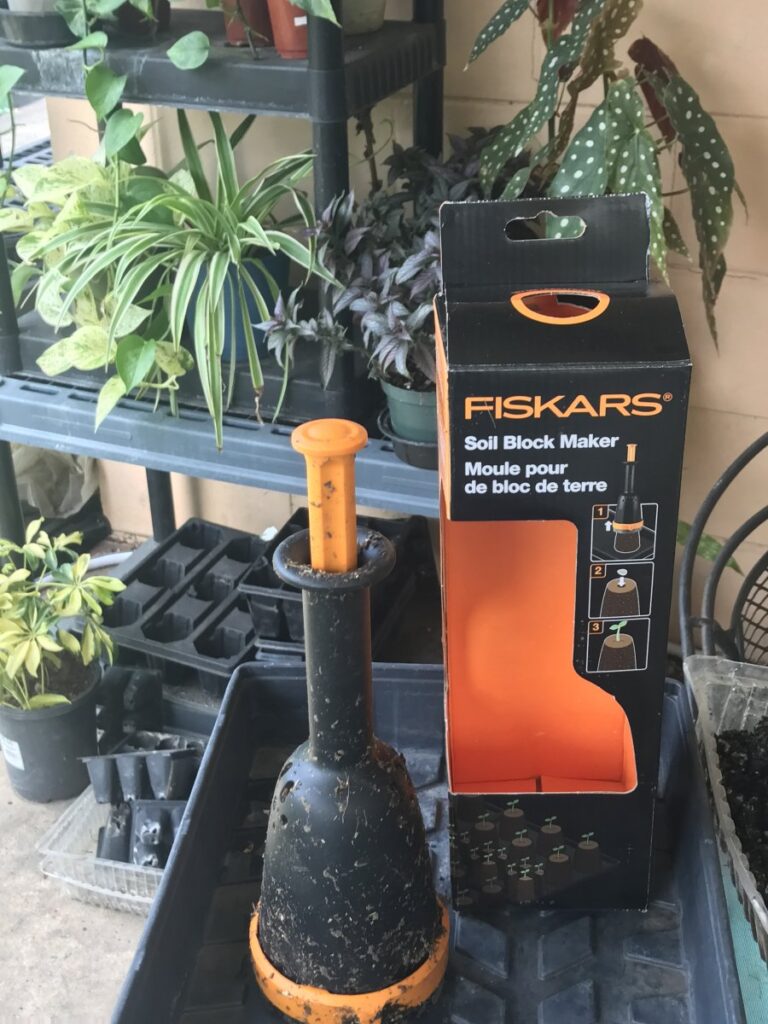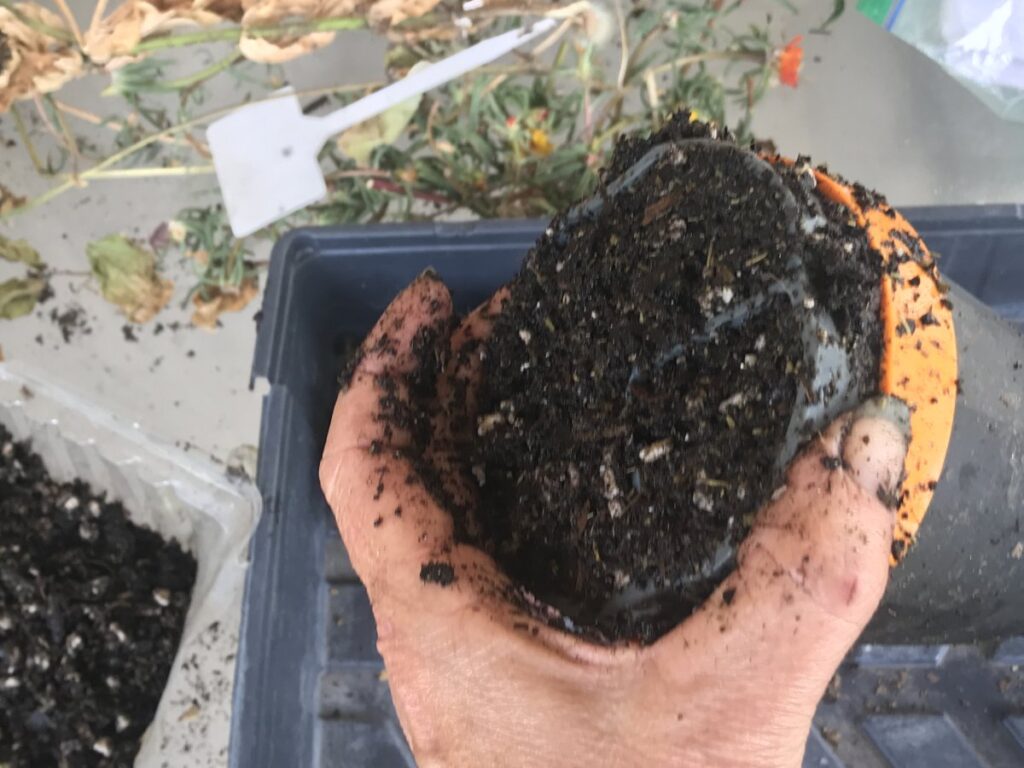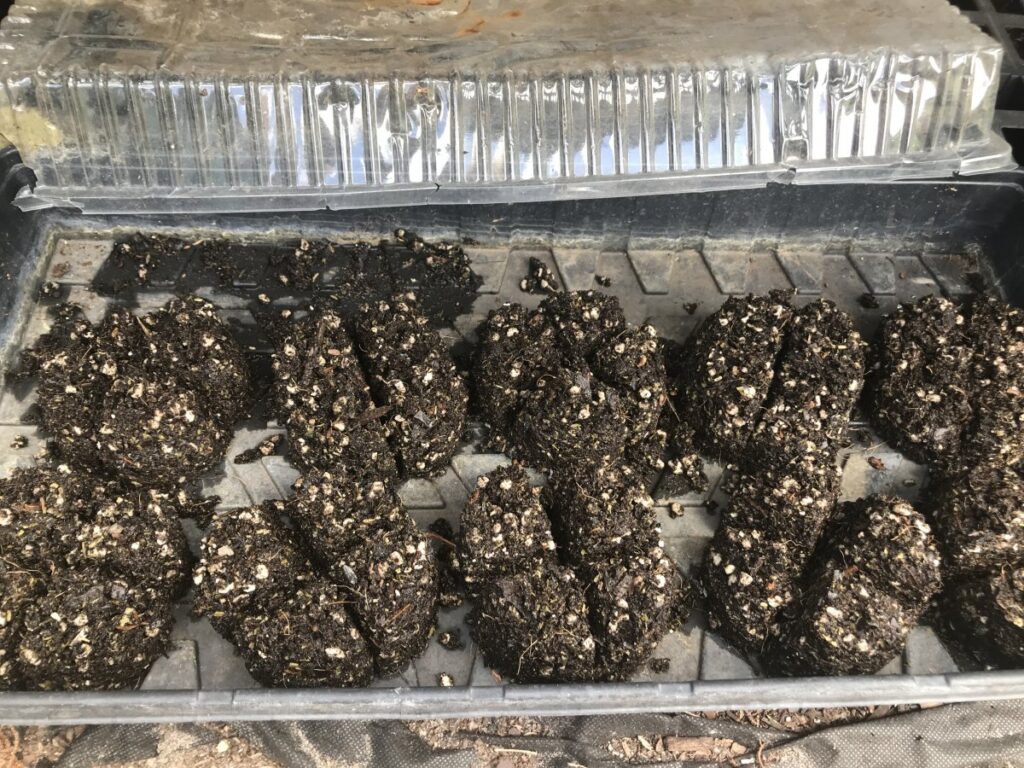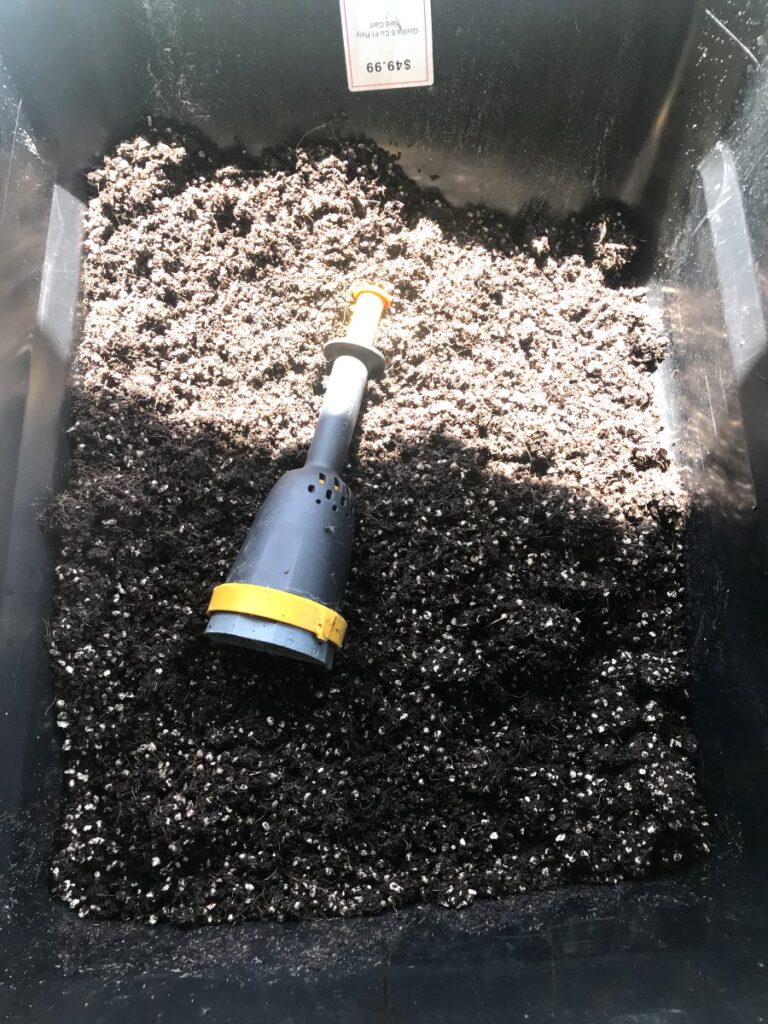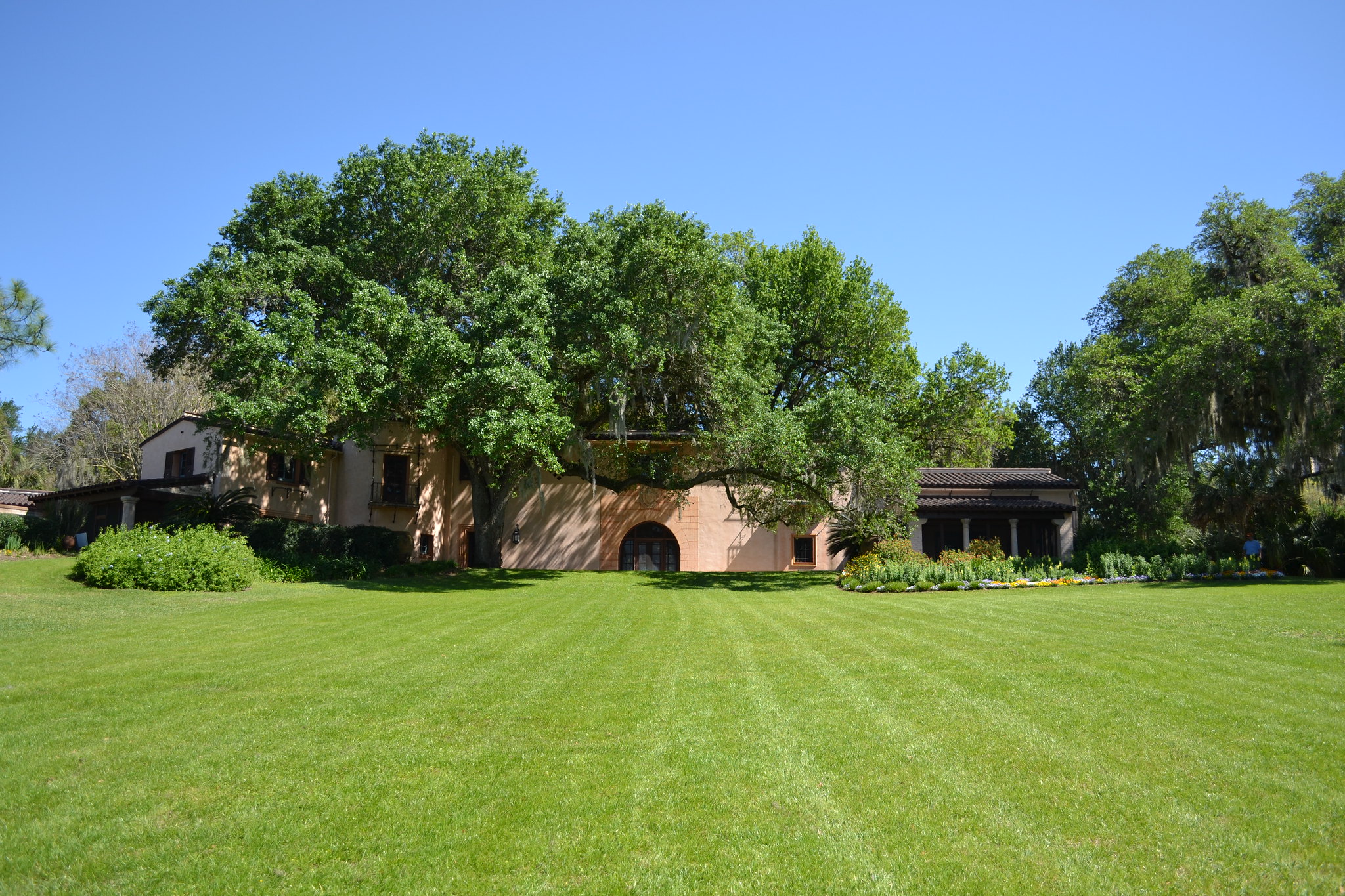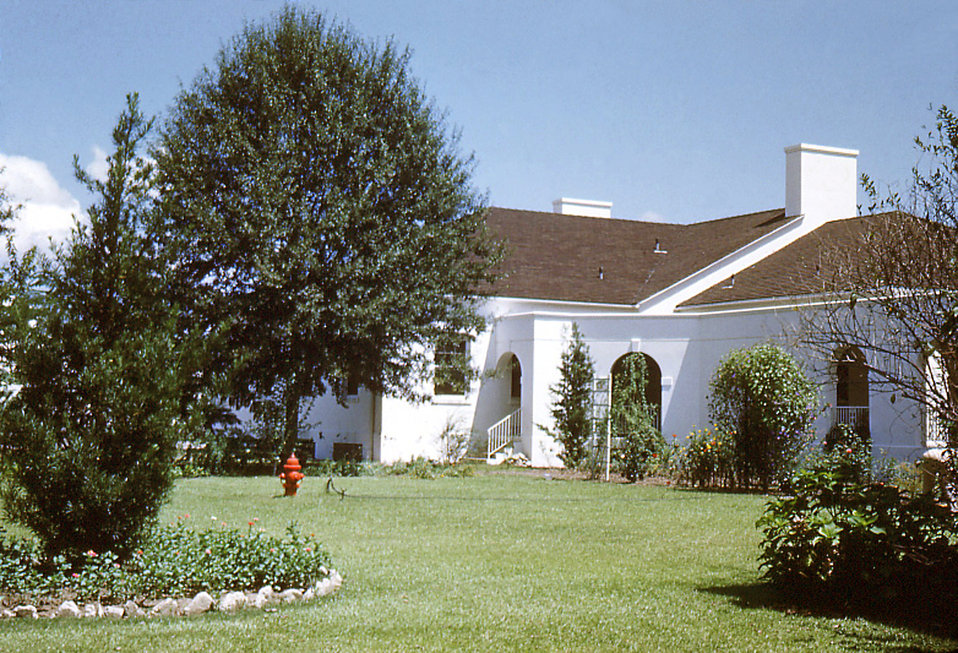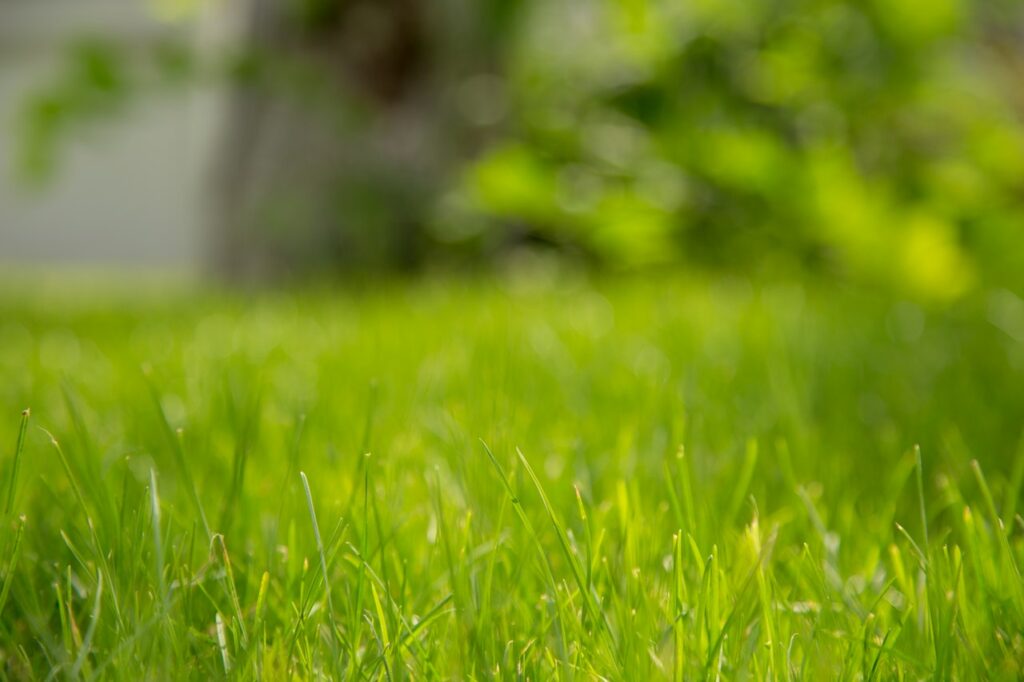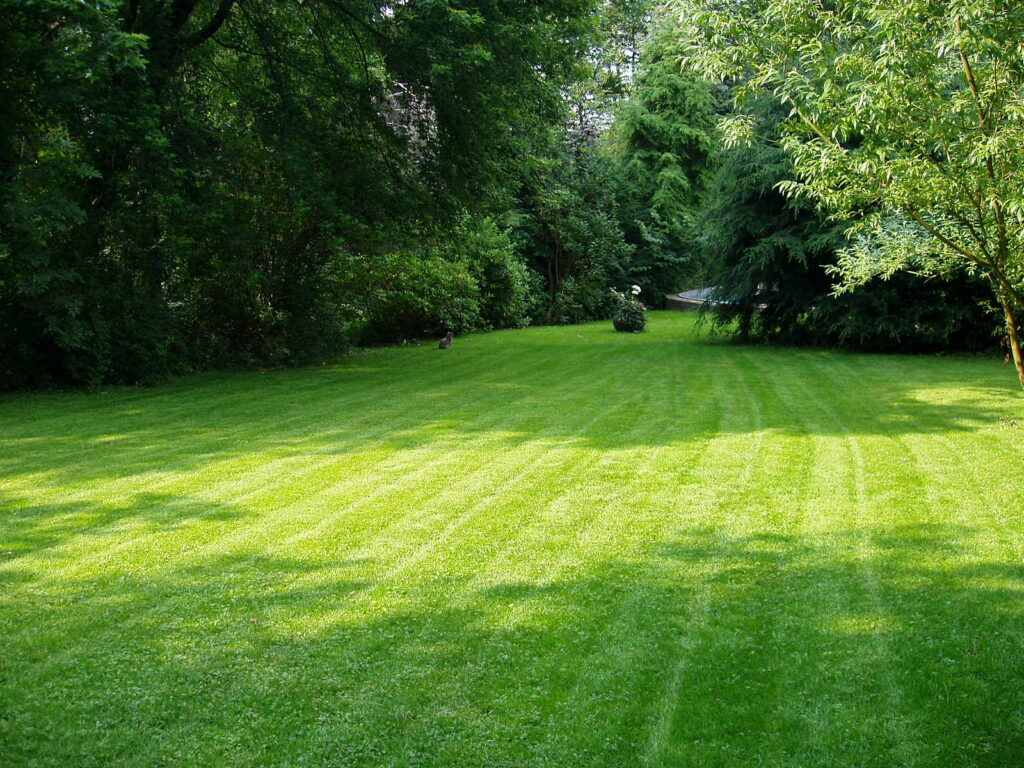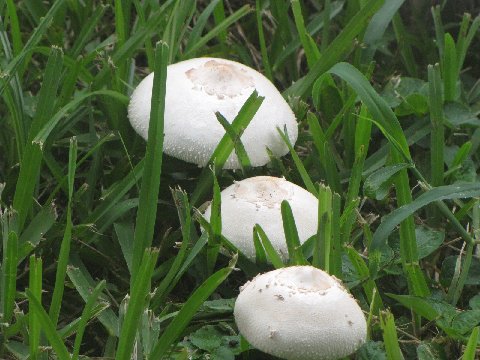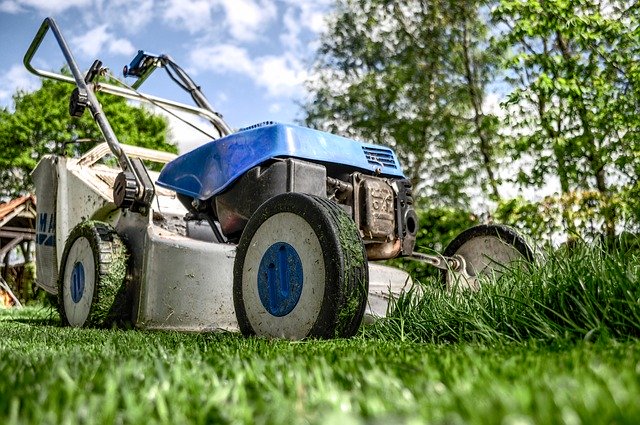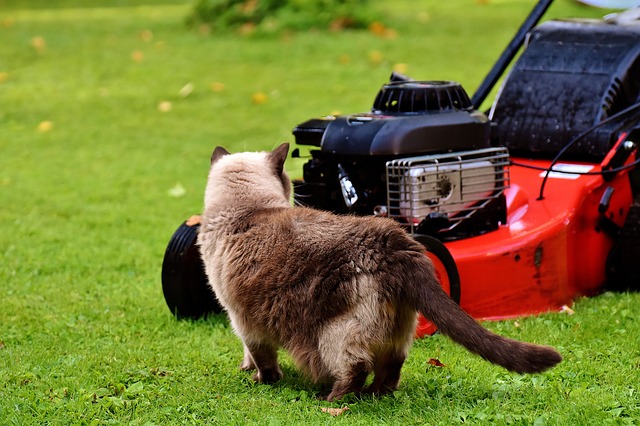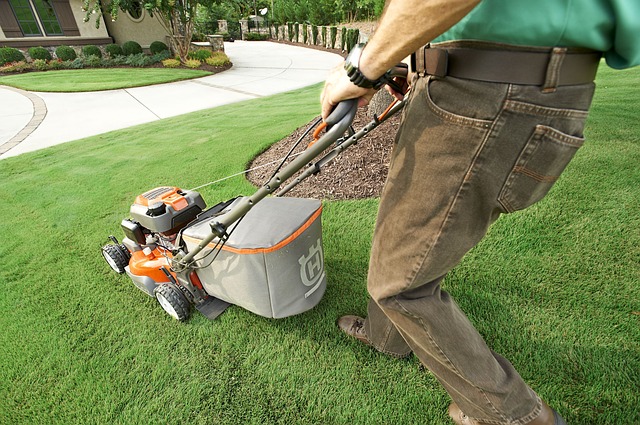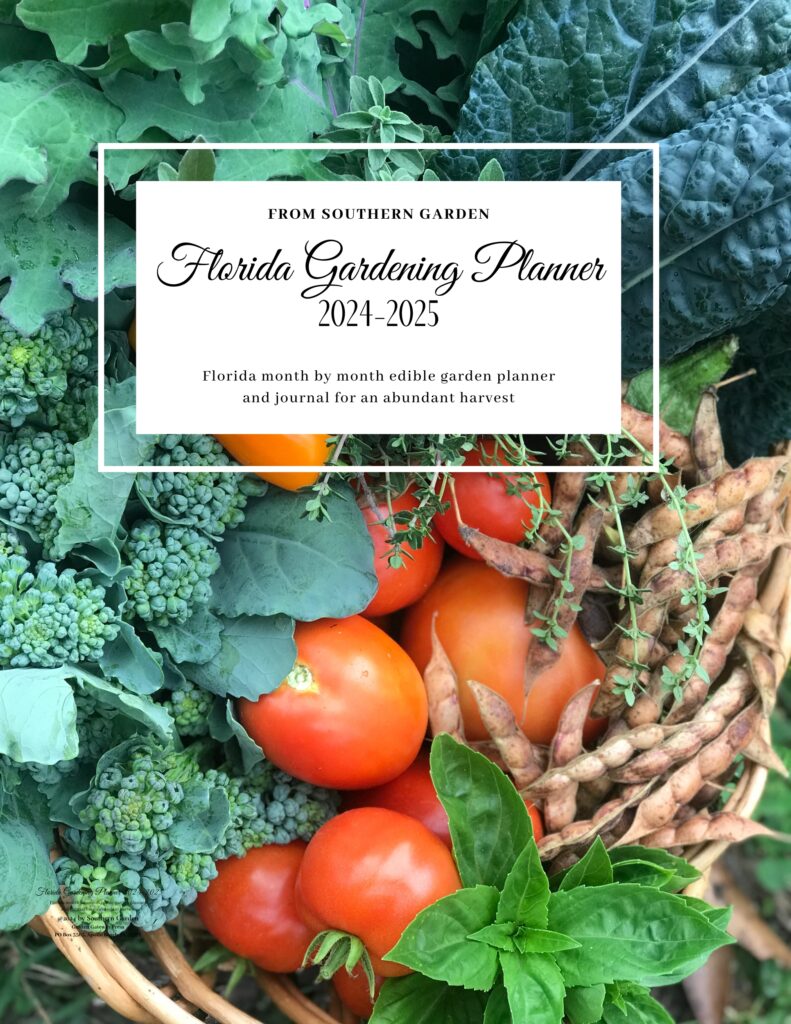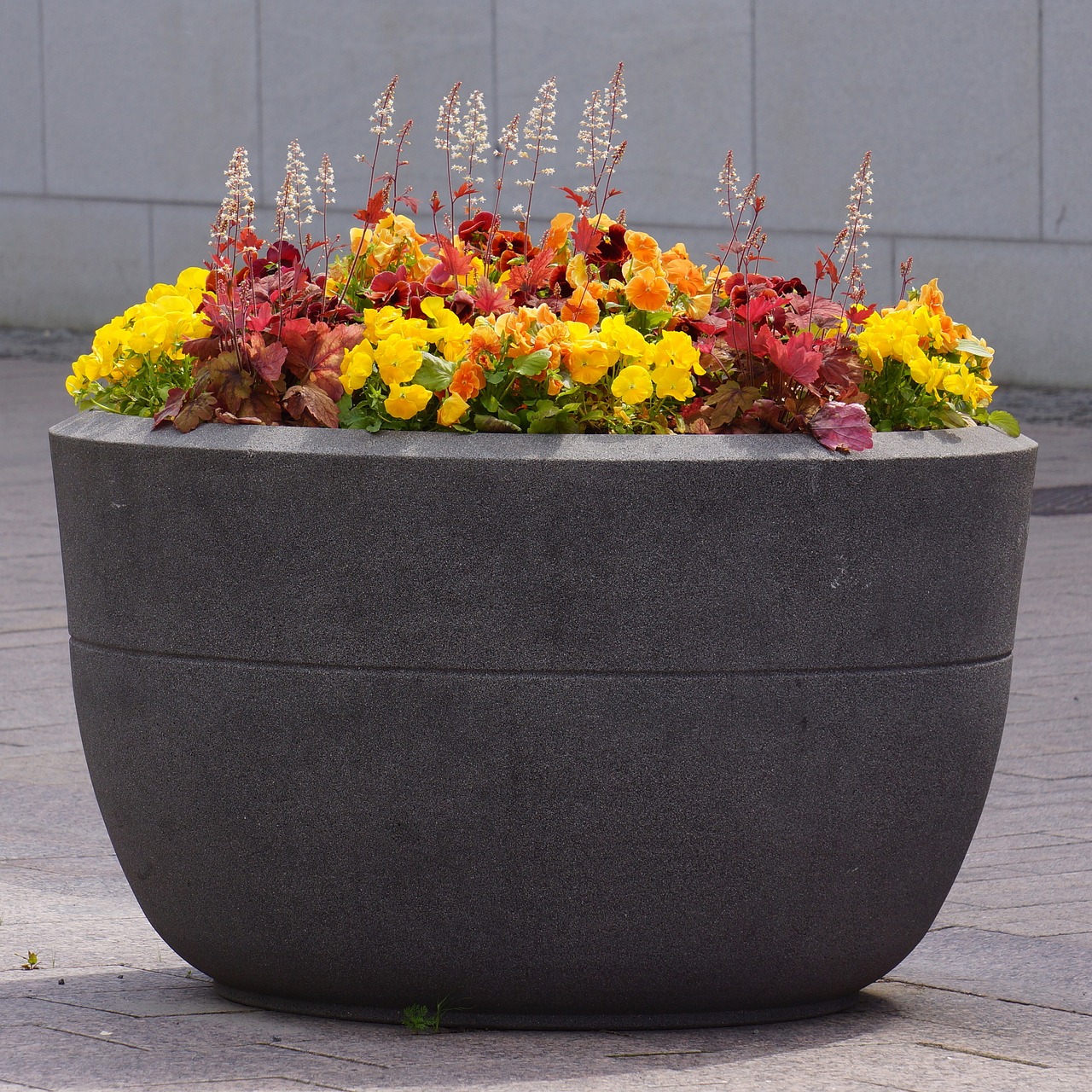
Did you know that using self-watering containers can reduce your garden’s water consumption by up to 65%? In Florida’s intense heat, that’s a game-changer. As someone who’s tested many self-watering containers in our challenging climate, I’ve discovered which features truly matter for Florida gardeners.
Let’s explore the top 10 picks for container gardening that can handle our scorching summers, frequent rains, and occasional freezes.
Essential Features for Florida Self-Watering Containers
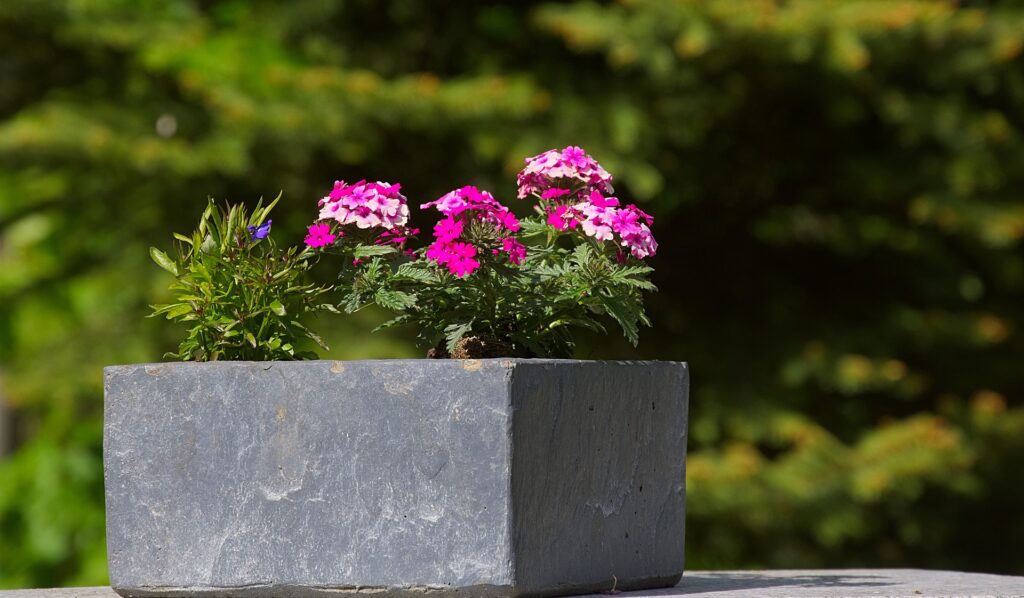
Florida’s climate presents unique challenges for gardeners, making it vital to choose self-watering containers designed to thrive in the state’s conditions. Here are the key features to look for:
UV-Resistant Materials for Sun Protection
Florida’s abundant sunshine can be intense, breaking down non-UV-protected plastics over time. Look for containers made from UV-resistant materials to ensure durability and longevity. These materials prevent cracking, fading, and brittleness, keeping your containers functional and looking good year-round.
Light-Colored Options for Summer Use
Dark containers absorb heat, which can stress plant roots during Florida’s hot summers. Opt for light-colored containers to reflect sunlight and help keep the root zone cooler. Colors like white, beige, or pastel shades are both practical and stylish.
Removable or Adjustable Water Reservoirs
Flexibility is critical when managing soil moisture in a self-watering container. Containers with removable or adjustable reservoirs make it easy to customize water storage based on your plants’ needs and the season. These features also simplify cleaning and maintenance to prevent algae buildup.
Hurricane-Resistant Design Features
Florida’s storm season requires sturdy containers that can withstand high winds and heavy rain. Look for containers with low profiles, weighted bases, or anchoring options to keep them stable during adverse weather. Lightweight plastic containers might tip over in strong winds, so consider heavier or reinforced designs, or be prepared to bring your plants indoors.
Smart Overflow Systems for Rainy Seasons
Florida’s frequent downpours can overwhelm poorly designed self-watering systems. Choose containers with overflow drains to prevent waterlogging and root rot. An effective overflow system ensures excess rainwater drains away while still allowing the reservoir to function as intended.
With these features in mind, your self-watering containers will be better equipped to handle Florida’s unique climate, keeping your garden thriving with less effort.
Top 10 Self-Watering Containers for Florida Gardens
Let’s look a bit closer at a few of the best models on the market.
1. Lechuza Balconera Color
- Discover the perfect way to bring your patio and balcony to life with the Balconera, brackets sold separately
- LECHUZA’s signature water reservoir supplies water to your plants as needed, extending the time between watering
- The planter’s water-level indicator shows when the reservoir needs to be refilled
Specs:
- Dimensions: 20″ (length) x 7″ (width) x 7″ (height)
Features:
- Self-Watering System: The built-in sub-irrigation system delivers water directly to the roots, ensuring optimal hydration without overwatering.
- UV-Resistant Material: Crafted from high-quality, UV-resistant plastic to withstand Florida’s intense sun, preventing fading or cracking.
- Interchangeable Plant Liners: Removable liners make planting, repotting, and cleaning easy and convenient.
- Overflow Drainage: Equipped with an overflow function to prevent waterlogging, particularly useful during Florida’s frequent rainstorms.
Pros:
- Durable Construction: The UV-resistant material ensures long-lasting durability, even under harsh Florida weather.
- Low-Maintenance Care: The self-watering system reduces the need for frequent watering, making it ideal for busy gardeners or those with frequent travel schedules.
- Aesthetic Design: The sleek, modern look fits seamlessly into various garden styles, from traditional to contemporary.
- Versatility: Suitable for a wide range of plants, from flowers and herbs to small vegetables like lettuce or peppers.
Cons:
- Mounting Brackets Sold Separately: If you plan to mount this planter on a balcony or railing, the necessary brackets are not included and must be purchased separately.
- Higher Price: The Lechuza Balconera Color is priced higher than many standard planters, which may be a consideration for budget-conscious shoppers. However, the features and build quality can justify the investment.
- Limited Size for Large Plants: While great for smaller plants, the 20-inch length and shallow depth may not support larger, deep-rooted vegetables.
Availability:
Buy on Amazon.com or Walmart.com
The Lechuza Balconera Color is a durable, aesthetically pleasing, and functional self-watering planter that works well for Florida gardens. Its UV-resistant material and self-watering feature are especially beneficial for Florida’s hot climate, reducing the need for frequent watering.
While it may not be suitable for larger plants, it is perfect for flowers, herbs, and small vegetables. The higher price point and additional cost for mounting brackets may be a drawback for some, but overall, it’s a solid investment for anyone looking for a low-maintenance, high-quality planter.
2. EarthBox 80151 Garden Kit, Organic, Green
- Includes: 1 lb. Organic fertilizer, 1 lb. Organic dolomite, 4 casters, and 2 Black/White reversible mulch covers
- Ub stabilized
- Maintenance free
- Award-winning, patented system
- Green in color
Specs:
- Dimensions: 29″ (length) x 14″ (width) x 10″ (height)
- Water Reservoir Capacity: 3 gallons
Features:
- Self-Watering System: Uses a sub-irrigation system with a water reservoir, providing consistent hydration to plants while preventing overwatering.
- Pre-assembled Fertilizer: Comes with organic fertilizer included, offering a convenient and nutrient-rich growing solution for plants.
- UV-Resistant Construction: The durable plastic construction is designed to withstand Florida’s intense sunlight without degrading.
- Easy Setup: Designed for straightforward assembly and use, with a simple process for filling the water reservoir and adding soil.
- Integrated Drainage: The self-watering system helps prevent overwatering while also providing built-in drainage to keep the plant roots healthy.
Pros:
- Self-Watering Convenience: The system ensures that plants receive consistent water, reducing the need for frequent manual watering.
- Organic Option: Comes with organic fertilizer, making it ideal for gardeners looking to grow produce without synthetic chemicals.
- Space-Saving Design: Its compact size makes it perfect for small spaces like balconies, patios, or small gardens.
- Durable and Long-Lasting: The UV-resistant materials ensure that it can handle Florida’s weather conditions over time.
Cons:
- Large Size: It may not be suitable for those looking for a more compact container, as it requires more space than smaller containers.
- Price: Compared to other basic planters, it is on the pricier side, though the included fertilizer and self-watering system may justify the cost.
- Requires Setup: While it’s easy to assemble, it does require a bit of setup, which might not be ideal for gardeners looking for immediate use.
Best for:
- Those looking for a self-watering container that’s perfect for growing vegetables, herbs, and flowers in small spaces like patios or balconies.
- Organic gardeners who appreciate the inclusion of natural fertilizer for healthy plant growth.
Availability:
Buy on Amazon.com or Walmart.com
The EarthBox 80151 Garden Kit is an excellent option for Florida gardeners seeking a reliable, self-watering container that includes organic fertilizer and offers a simple setup. It’s particularly great for those with limited space who want a low-maintenance, efficient way to grow vegetables and herbs.
While it may be a bit large for some, and the price may be higher than some alternatives, the convenience of the self-watering system and organic materials make it a valuable investment for many gardeners.
3. City Jungle Self-Watering Planter
- ROBUST TRELLIS FOR CLIMBING PLANTS: Enhance your garden with our trellis planter, designed for uninterrupted growth of vining flowers, vegetables, and top-heavy species like Tomatoes and Dahlias.
- WEATHER-RESILIENT EXTENSIBLE DESIGN: Features a sturdy, weather-resistant trellis that extends up to 63 inches, ensuring optimal plant support and placement in any outdoor environment.
Specs:
- Dimensions: 47.25″ (length) x 23.5″ (width) x 47″ (height with trellis)
- Water Reservoir Capacity: 4.5 gallons
Features:
- Self-Watering System: The built-in irrigation system keeps plants consistently watered, ideal for Florida’s hot summers and reducing maintenance.
- Integrated Trellis: The attached trellis is perfect for climbing plants like tomatoes, cucumbers, and peas, allowing for vertical growth in smaller spaces.
- Durable Construction: Made from high-quality materials designed to withstand the outdoor elements, including UV resistance to prevent fading and degradation from the sun.
- Efficient Use of Space: With the raised bed and trellis design, this container maximizes gardening space in small areas like patios, balconies, and urban gardens.
- Built-In Drainage: The bed features a drainage system that helps to prevent waterlogging and ensures healthy root growth.
Pros:
- Space-Saving Design: The vertical trellis and raised bed design make it ideal for small spaces while still providing ample room for plants to grow.
- Convenient Watering: The self-watering system reduces the need for frequent watering, making it a low-maintenance option for busy gardeners.
- Versatile Planting: Suitable for growing a wide range of vegetables, herbs, and climbing plants, including tomatoes, beans, and cucumbers.
- Durable and Weather-Resistant: The UV-resistant construction ensures it will last in Florida’s sunny climate without deteriorating.
- Easy Assembly: Most users find the bed easy to assemble with minimal effort.
Cons:
- Size Limitation: While it’s a great option for small spaces, it may not be ideal for gardeners who want to grow larger quantities of plants.
- Water Reservoir Capacity: The 3.5-gallon reservoir may not be sufficient for larger or more thirsty plants, requiring extra watering during dry spells.
- Trellis Height: The trellis is somewhat short for taller plants like tomatoes, so gardeners may need to adjust or use additional supports.
Best for:
- Urban gardeners or those with limited space, like apartment dwellers or homeowners with small patios or balconies.
- Gardeners looking for an easy-to-maintain, self-watering solution for growing a variety of plants, especially those that need vertical support.
Availability:
Buy on Amazon.com or Walmart.com
The BioGreen Raised Garden Bed from City Jungle is a fantastic choice for Florida gardeners with limited space who are looking for a self-watering, easy-to-assemble solution. Its space-saving design and integrated trellis are perfect for growing a variety of plants, especially those that require vertical support.
While the water reservoir might be a bit small for larger plants, and the trellis could be taller for some crops, its durability and low-maintenance watering system make it an excellent option for small-space urban gardeners.
4. Bloem Ariana Self-Watering Planter Pots
- Capacity: 11 Gallons / Size: 21.5 in. Top width x 12 in. Bottom width x 17 in. Height
- Self-watering disk included. The disk helps to store reserved water, which can be used up by the plants at a later time. Plant will absorb water when needed.
- Sealed bottom to prevent leakage indoors. Optional knock-out drainage holes when used outdoors.
Specs:
- Dimensions: 20″ (diameter) x 14″ (height)
- Water Reservoir Capacity: 3.2 gallons
Features:
- Self-Watering System: Equipped with an easy-to-use self-watering feature that helps maintain consistent moisture levels for your plants, reducing the need for frequent watering.
- Durable Construction: Made from lightweight, high-quality resin that resists cracking and fading, even in full sun exposure typical in Florida.
- Sleek Design: The modern, clean lines of the planter fit seamlessly into any garden or patio, adding aesthetic value without overpowering the surrounding space.
- Drainage Hole: Comes with a drainage hole to prevent water from pooling at the bottom, ensuring your plants don’t suffer from root rot.
- UV-Resistant: Built to withstand harsh sunlight, making it ideal for Florida’s year-round sun exposure.
Pros:
- Self-Watering Convenience: The self-watering system means you don’t have to water as often, making it a great option for busy gardeners.
- Lightweight and Easy to Move: Despite its large size, the planter is made from lightweight materials, making it easy to move around your garden or patio.
- Aesthetic Appeal: The sleek, simple design complements a variety of plants, from native flowers to small vegetables, adding a touch of elegance to your outdoor space.
- Durable in Sun: Resists fading and cracking under Florida’s intense sun, providing long-term use.
- Affordable: This planter is reasonably priced, offering good value for its features, especially for those seeking a low-maintenance gardening solution.
Cons:
- Size Limitation: While great for small to medium-sized plants, larger plants may not have enough space to fully thrive in this planter.
- No Water Level Indicator: Unlike some other self-watering planters, this one doesn’t have a clear water level indicator, making it harder to gauge when to refill the reservoir.
Best for:
- Florida gardeners looking for an easy-to-use, aesthetically pleasing self-watering planter for small to medium-sized plants like flowers, herbs, or small vegetables.
- Gardeners who prefer low-maintenance options that don’t require daily attention.
Availability:
Buy on Amazon.com or Walmart.com
The Bloem Ariana Self-Watering Planter is an excellent choice for Florida gardeners seeking a sleek, low-maintenance option for smaller to medium-sized plants. Its self-watering feature and UV-resistant construction make it an ideal fit for the state’s sunny, often dry climate.
While it may not be the best choice for large plants or those with deep root systems, its ease of use, aesthetic appeal, and affordability make it a popular option for urban gardeners, patio enthusiasts, and those with limited gardening space.
5. Emsco City Pickers Raised Planter Beds
- Set of 2 raised planter beds, each with a terra cotta colored finish
- Resin construction remains durable for many seasons
- Casters on the base of each planter allow you to reposition them as needed
Specs:
- Dimensions: 24″ (length) x 20″ (width) x 12″ (height
Features:
- Self-Watering System: Helps reduce the frequency of watering by automatically supplying moisture to your plants.
- UV-Protected Plastic: Designed to endure the Florida sun with its UV-resistant polypropylene construction.
- Raised Design: The elevated height of the planter reduces strain on the back and knees, making it accessible for gardeners of all abilities.
- Overflow Drainage: Prevents waterlogging by allowing excess water to drain away, protecting plant roots from being too wet.
Pros:
- Easy Maintenance: The self-watering system makes it easier to maintain plants with less frequent watering required.
- Durable Construction: UV-protected plastic ensures that the planter can withstand the Florida sun and rain without deteriorating.
- Ergonomic Design: The raised height of the planter allows gardeners to work without bending over, making it great for anyone with mobility concerns.
- Value for Money: A budget-friendly self-watering planter, offering convenience without a high price tag.
Cons:
- Water Reservoir: While the self-watering feature is convenient, some users may find that the reservoir needs to be refilled more frequently, especially during hot, dry periods.
- Depth: The planter’s depth may not be sufficient for larger plants or deep-rooted vegetables.
Best for:
- People with limited space who want a self-watering option for small plants like herbs, flowers, or compact vegetables.
- Those who prefer an easy-maintenance solution for gardening without needing to water as frequently.
Availability:
Buy on Amazon.com or Walmart.com
The EMSCO City Pickers 24″x20″ planter is an affordable and convenient choice for gardeners looking for an easy-to-maintain, self-watering planter. It’s perfect for herbs, flowers, and small vegetables, especially for those with limited space.
While it may not be suitable for larger plants, it offers great value for the price and performs well in Florida’s weather with its UV-resistant construction and self-watering features.
6. CedarCraft Convenient Self-Watering Elevated Cedar Planter
- Quick & easy to assemble. No tools required
Specs:
- Dimensions: 37.5″ (length) x 15.75″ (width) x 31.5″ (height)
Features:
- Elevated Design: The planter is raised to a comfortable working height, reducing strain on your back and knees.
- Self-Watering System: Includes a water reservoir to automatically irrigate plants, promoting healthy growth with minimal watering.
- Durable Cedar Construction: Made from high-quality cedar wood, known for its natural resistance to pests and decay.
- Overflow Drainage: Features drainage holes to allow excess water to escape, preventing waterlogging and root rot.
Pros:
- Ergonomic: The elevated height makes it accessible for people with mobility issues, reducing the need for bending down while gardening.
- Aesthetically Pleasing: The natural cedar wood gives the planter a rustic, attractive look that fits well in various garden settings.
- Self-Watering: Reduces the frequency of watering and provides consistent moisture to plants, especially during the hotter months.
- Durable and Long-Lasting: Cedar is naturally resistant to rot, making this planter a great option for long-term use.
Cons:
- Assembly Required: Some users find the assembly process a bit challenging, as it involves multiple parts and tools.
- Limited Depth for Larger Plants: The depth of the planter may not be sufficient for larger or deep-rooted plants.
- Price: While it’s a high-quality product, some users feel it’s on the expensive side, especially when compared to other self-watering planters.
Best for:
- Gardeners looking for a space-saving solution for small to medium-sized plants, herbs, and vegetables.
- Those who prefer the aesthetic appeal of natural wood in their garden décor.
- People with mobility issues who need an elevated planting option to avoid bending down.
Availability:
Buy on Amazon.com or Walmart.com
The CedarCraft Convenient Self-Watering Elevated Cedar Planter is a stylish and practical option for gardeners looking to grow herbs, flowers, or small vegetables with less maintenance. Its elevated design makes gardening comfortable, and the self-watering system helps keep plants hydrated.
While assembly may take some time and it may not be suitable for larger plants, this planter’s durability and aesthetic appeal make it a great choice for those seeking an attractive, functional addition to their garden or patio.
7. Dexceder 13.2 Gallon Self Watering Raised Garden Bed with Ventilation Transparent Lid Greenhouse
- SELF WATERING & NO MORE ROOT ROT – The smart unique sub-irrigation system is one of the most appealing aspects among all Dexceder planters. The easy-to-use separated integrated water reservoir or catcher keeps your soil well aerated and automatic supplies plants with the right amount of ongoing…
Specs:
- Dimensions: 35.8″ (length) x 17.7″ (width) x 17.7″ (height)
- Water Reservoir Capacity: 13.2 gallons
Features:
- Self-Watering System: Includes a built-in water reservoir at the bottom that automatically waters plants, ensuring consistent hydration.
- Ventilated Transparent Lid: The transparent lid allows sunlight to reach the plants while providing ventilation to regulate temperature and humidity.
- Durable Plastic Construction: Made from high-quality, UV-resistant plastic, designed to withstand outdoor elements and protect plants from harsh weather.
- Raised Design: The raised bed design helps reduce strain on your back and knees, making gardening more accessible.
Pros:
- Self-Watering Convenience: The self-watering system significantly reduces the need for frequent watering, making it ideal for busy gardeners or those in hot climates.
- Ventilation and Temperature Control: The transparent lid with ventilation openings helps regulate temperature and humidity, creating a greenhouse-like environment for plants.
- Durability: The UV-resistant plastic construction ensures the planter lasts longer, even when exposed to the sun and rain.
- Ergonomic: The raised design makes it easier on the back and knees, perfect for those who want to garden without bending over.
Cons:
- Lid May Get Too Hot: While the transparent lid provides sunlight, some users have mentioned that the plants can get too hot under direct sunlight, particularly during peak summer months.
- Assembly: The setup process can be a bit tricky, and some customers found it challenging to assemble the unit without clear instructions.
- Size Limitations: The bed may be a bit small for larger plants or a significant number of vegetables, limiting the range of crops that can be grown.
Best for:
- Gardeners with limited space who need a compact, raised garden bed.
- Those looking for a self-watering option to reduce the need for daily watering.
- Individuals who want to grow small vegetables, herbs, or flowers with some protection from the elements.
Availability:
Buy on Amazon.com
The Dexceder 13.2 Gallon Self-Watering Raised Garden Bed with Ventilation Transparent Lid Greenhouse is an excellent choice for small-space gardeners looking for a self-watering solution with some protection from the elements.
While it may not be suitable for large plants and requires careful monitoring of temperature under the lid, its ease of use, durability, and ergonomic design make it a solid option for growing a variety of herbs, flowers, and compact vegetables.
8. Keter Urban Bloomer 12.7 Gallon Raised Garden Bed
- DIMENSIONS: 32. 3 in. L x 14. 7 in. W x 30. 7 in. H
- The easiest outdoor herb garden planter with built in water gauge it indicates when plants need additional moisture
- DRAINAGE SYSTEM that can be opened or closed for full control of watering
Specs:
- Dimensions: 24.2″ (length) x 15.7″ (width) x 30″ (height)
Features:
- Self-Watering Reservoir: Features a built-in water reservoir that helps maintain consistent moisture levels, reducing the need for frequent watering.
- Ergonomic Design: Elevated design allows for easy gardening without bending over, reducing strain on your back and knees.
- Durable Resin Construction: Made from weather-resistant resin material, designed to withstand outdoor elements, and maintain its appearance over time.
- Modern Look: The sleek, contemporary design complements urban and modern garden spaces, making it an attractive addition to balconies, patios, and small yards.
- Easy Assembly: Snap-together design that doesn’t require any tools for assembly.
Pros:
- Ergonomic Height: The elevated design is perfect for gardeners who want to avoid bending over, making it easier for those with mobility issues or back pain.
- Low Maintenance: The self-watering system minimizes the frequency of watering, making it ideal for busy gardeners or those who travel often.
- Durable and Weather-Resistant: The high-quality resin construction ensures that the planter will last through the seasons without cracking or fading.
- Stylish Design: The sleek graphite color and modern look make it a great fit for urban or contemporary gardens.
Cons:
- Smaller Planting Area: While it’s ideal for smaller plants, the limited planting space may not be suitable for larger vegetable varieties with expansive root systems.
- Watering Reservoir Needs Monitoring: Some users mention that the water reservoir needs to be regularly checked to ensure it doesn’t dry out or overflow, especially in very hot climates.
Best for:
- Urban gardeners with limited space looking for a compact, self-watering solution.
- Gardeners who prefer an ergonomic, elevated design to avoid bending down.
- Those with small or medium-sized plants, like herbs, flowers, or compact vegetables.
Availability:
Buy on Amazon.com
The Keter Urban Bloomer 12.7 Gallon Raised Garden Bed is an excellent choice for urban gardeners or those with limited space looking for an ergonomic, self-watering solution.
While it’s best suited for smaller plants and requires occasional monitoring of the water reservoir, its durable construction, easy assembly, and stylish design make it a worthwhile option for anyone looking to garden comfortably and efficiently in small spaces.
9. Mr Stacky Smart Farm
- Change Your Lifestyle: Grow Healthy, Nutrient-Rich Food Easier, Faster, And More Convenient Than Ever Before All Year-Round, With or Without Soil. – We Believe That Growing Food At Home Not Only Provides A Healthier Life But A Happier One!
Specs:
- Dimensions: 18.5″ (width) x 36″ (height) x 18.5″ (depth)
Features:
- Modular Stacking Design: The Smart Farm includes multiple stackable planting tiers that allow for vertical gardening, making it perfect for small spaces.
- Hydroponic System: Designed for hydroponic gardening, it allows plants to grow without soil, using water and nutrient solutions for faster growth and healthier plants.
- Self-Watering: The self-watering feature ensures that the plants receive adequate moisture without the need for frequent manual watering.
- Durable, Food-Safe Materials: Made with high-quality, food-safe plastic materials, ensuring that your plants grow safely for consumption.
- Expandable Design: You can stack multiple units together to expand your growing area vertically as your garden grows.
Pros:
- Space-Efficient: The vertical stacking design allows you to maximize space, making it ideal for small gardens, balconies, or patios.
- Low Maintenance: The self-watering and hydroponic features minimize the need for constant care and watering, making it perfect for beginners or those with limited time.
- Faster Plant Growth: The hydroponic system promotes faster growth compared to traditional soil gardening, thanks to the constant access to water and nutrients.
- Customizable: You can add or remove tiers to adjust the system’s size to fit your needs and available space.
Cons:
- Learning Curve: While hydroponic gardening is efficient, it can be tricky for beginners who may need time to adjust to the system and monitor nutrient levels carefully.
- Requires Regular Maintenance: The system needs occasional cleaning and checking of the nutrient solution to ensure optimal plant health. If not maintained properly, the plants may suffer.
- Not Ideal for Larger Plants: Due to the vertical design and compact space, the system may not be ideal for larger plants or vegetables with deep root systems.
Best for:
- Urban gardeners or those with limited space looking for a vertical gardening solution.
- Hydroponic enthusiasts or beginners who want to try growing plants without soil.
- Gardeners interested in growing herbs, small vegetables, or leafy greens.
Availability:
The Mr. Stacky Smart Farm is an excellent choice for gardeners with limited space who want to try hydroponic gardening. Its vertical design and self-watering features make it a low-maintenance, space-efficient solution for growing herbs, small vegetables, and leafy greens.
While it may take a little time to get used to the hydroponic system, the faster plant growth and customizable design make it a worthwhile investment for urban gardeners or those new to hydroponics.
10. Vegepod – Raised Garden Bed
- RAISED GARDEN BED KIT Vegepod Raised Garden Bed Kits are simply the easiest way to grow your own vegetables. You get the size of a raised garden bed with all the benefits of container gardening. The base contains the soil so neighbouring trees don’t steal nutrients.
Specs:
- Dimensions: 48″ (length) x 48″ (width) x 30″ (height)
Features:
- Self-Watering System: Includes an integrated self-watering system with a water reservoir and irrigation pipe, ensuring consistent moisture for your plants.
- Protective Cover: Comes with a UV-resistant, breathable cover to protect plants from harsh sunlight, pests, and cold weather, extending the growing season.
- Raised Bed Design: The raised bed design reduces strain on your back and makes gardening easier and more accessible.
- Modular Setup: The system is modular, allowing you to link multiple units together for a larger growing area.
- Durable Materials: Made from high-quality, UV-resistant materials to withstand outdoor conditions, including Florida’s hot sun and humidity.
- Includes Legs: Elevated legs raise the garden bed off the ground, making it easier to access and protect the plants from ground pests.
Pros:
- Effortless Watering: The self-watering feature ensures your plants receive consistent moisture, reducing the need for constant attention.
- Space Efficient: Ideal for small spaces, balconies, or patios, where traditional garden beds may not fit.
- Protects Plants: The included cover shields plants from pests and environmental stresses, allowing for a longer growing season.
- Ergonomic Design: The raised height makes it easier to maintain your garden without the need to bend down, which is especially beneficial for those with physical limitations.
- Quality Construction: Durable, UV-resistant materials are designed to stand up to outdoor conditions, making the Vegepod a long-lasting investment.
Cons:
- Size Limitations: While perfect for small gardens, the 4×4 foot size may not be large enough for larger crops or for those with extensive gardening needs.
- Initial Setup: Some users find the initial setup of the self-watering system and protective cover a bit time-consuming.
- Price: The Vegepod is extremely expensive compared to other self-waterting raised beds, which could be a downside for budget-conscious gardeners.
Best for:
- Small-space gardeners, including those with patios, balconies, or limited yard space.
- Beginners or gardeners looking for a low-maintenance, self-watering system.
- Anyone looking to grow vegetables, herbs, or flowers in a protected, ergonomic setup.
Availability:
Buy on Amazon.com or Walmart.com
The Vegepod is a great option for small-space gardeners, those looking for an easy-to-maintain, ergonomic garden bed, or anyone interested in extending the growing season with its protective cover. Its self-watering system is perfect for busy gardeners, while the durable materials and modular design make it a solid long-term investment.
While it may be expensive and somewhat limited in size, the convenience, ease of use, and additional features make it a great choice for anyone looking to grow veggies or herbs with minimal hassle.
11. Vego garden Tomato Planter Box with Trellis
- Innovative Watering System in Raised Garden Planter: A reliable and efficient solution for delivering water to your plants without having to worry about overflow. The water storage volume of the tomato planter box is about 9L, fill it once to water your planter for up to 1.5 months! This innovative design gives new gardeners a hassle-free way to start growing!
Specs:
- Dimensions: 24″ (length) x 24″ (width) x 20″ (height)
Features:
- Self-Watering System: Includes a self-watering feature with a water reservoir that ensures plants receive consistent moisture for optimal growth.
- Trellis for Climbing Plants: Comes with a sturdy trellis designed to support climbing plants like tomatoes, cucumbers, or peas, ideal for vertical gardening.
- Durable Materials: Made from high-quality, rust-resistant, and UV-resistant materials to withstand outdoor weather conditions.
- Easy Setup: The planter is designed for quick assembly with minimal tools required.
- Modular Design: The system is expandable, allowing you to link multiple planter boxes together to create a larger gardening area.
Pros:
- Ideal for Vertical Gardening: The trellis system is perfect for growing vining plants like tomatoes, providing vertical space and preventing plants from sprawling on the ground.
- Self-Watering Feature: Helps conserve water and reduces the need for frequent watering, which is especially beneficial for busy gardeners or in hot climates.
- Durable Construction: The materials used are UV-resistant and rust-proof, making it a long-lasting option for outdoor gardening.
- Easy Assembly: The planter box can be set up quickly, even for beginners, without the need for specialized tools.
- Expandable: Can be connected with other Vego Garden planters, allowing you to create a larger gardening system.
Cons:
- Size Limitations: The 24×24 inch planter may be too small for gardeners looking to grow larger tomato varieties or multiple plants in one box.
- Water Reservoir: Some users mentioned that the water reservoir is relatively small for the size of the planter, requiring more frequent refilling during peak growing seasons.
Best for:
- Tomato growers or those interested in vertical gardening who want to save space and grow climbing vegetables.
- Small-space gardeners, especially those with limited horizontal space but room for vertical growth.
- Beginners or those looking for a simple, low-maintenance gardening solution with self-watering features.
Availability:
Buy on Amazon.com or Walmart.com
The Vego Garden Tomato Planter Box with Trellis is a solid choice for small-space gardeners looking to grow tomatoes or other climbing vegetables. Its self-watering system reduces maintenance, and the included trellis helps maximize vertical space.
While it may not be the best option for larger plants or those needing a more extensive water reservoir, the planter offers great value for anyone focused on growing compact crops in a space-efficient manner.
Seasonal Considerations for Self-Watering Containers
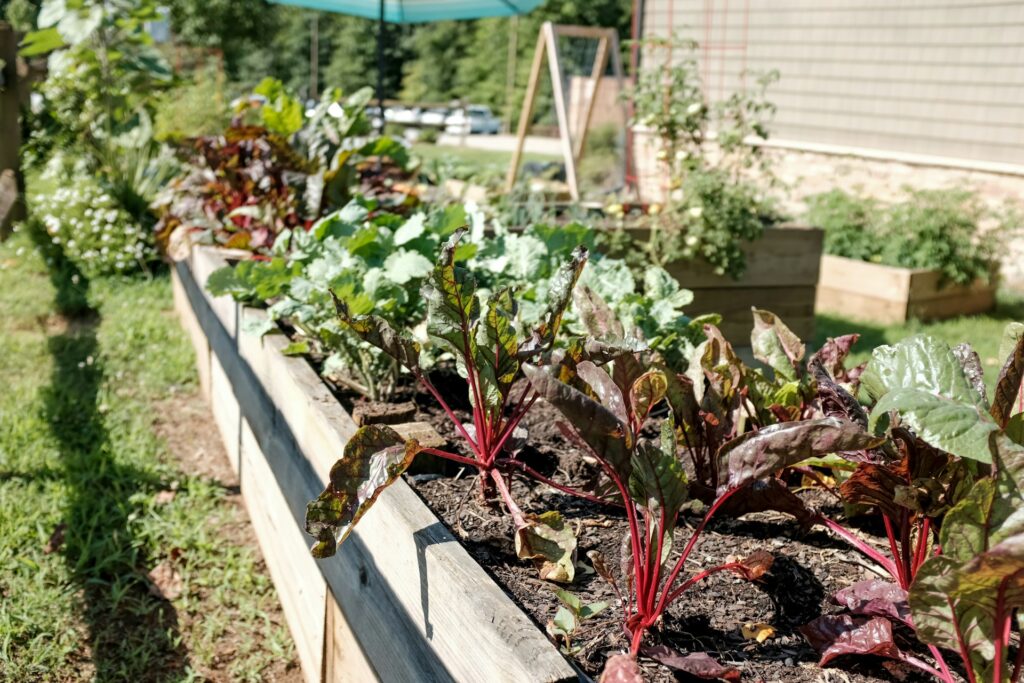
When selecting self-watering containers for your Florida garden, understanding how seasonal changes can affect plant health and watering needs is crucial. The right container for the job can make all the difference, helping you keep your plants thriving year-round despite the state’s hot summers, occasional cold snaps, and rainy seasons.
Here are some key factors to consider when choosing and maintaining self-watering containers throughout the year:
Summer Strategies for Light-Colored Containers
During Florida’s long, hot summers, light-colored containers can help keep plants cooler by reflecting sunlight and reducing heat absorption. Dark containers tend to absorb heat, which can stress plants by raising soil temperatures.
Opting for white, light gray, or pastel-colored planters can help mitigate this issue, keeping your plants comfortable while maintaining proper hydration levels.
Additionally, containers with reflective surfaces may help prevent evaporation from the soil, keeping the water reservoir functioning efficiently during the hottest months.
Winter Adjustments with Darker Containers
In the cooler months, dark-colored containers may be your best bet. These containers absorb more sunlight, which helps keep the soil temperature higher—critical for plants that require warmth to thrive.
This is particularly important for container plants grown in the fall and winter, as the soil in light-colored containers can become too cool, slowing down root growth and overall plant health.
Dark containers can also hold onto a little extra heat on chilly nights, offering additional protection to sensitive plants.
Rainy Season Reservoir Management
Florida’s rainy season can pose a unique challenge to container gardening, especially when it comes to managing the water reservoir in self-watering containers. Heavy rains can fill reservoirs quickly, potentially leading to waterlogging and root rot if not properly managed.
Some containers are equipped with overflow drainage systems that help prevent excess water buildup, which is crucial for Florida’s intense storms. If your container doesn’t have this feature, consider adding a manual overflow or positioning containers in slightly elevated areas to help with drainage.
Hurricane Preparation Tips
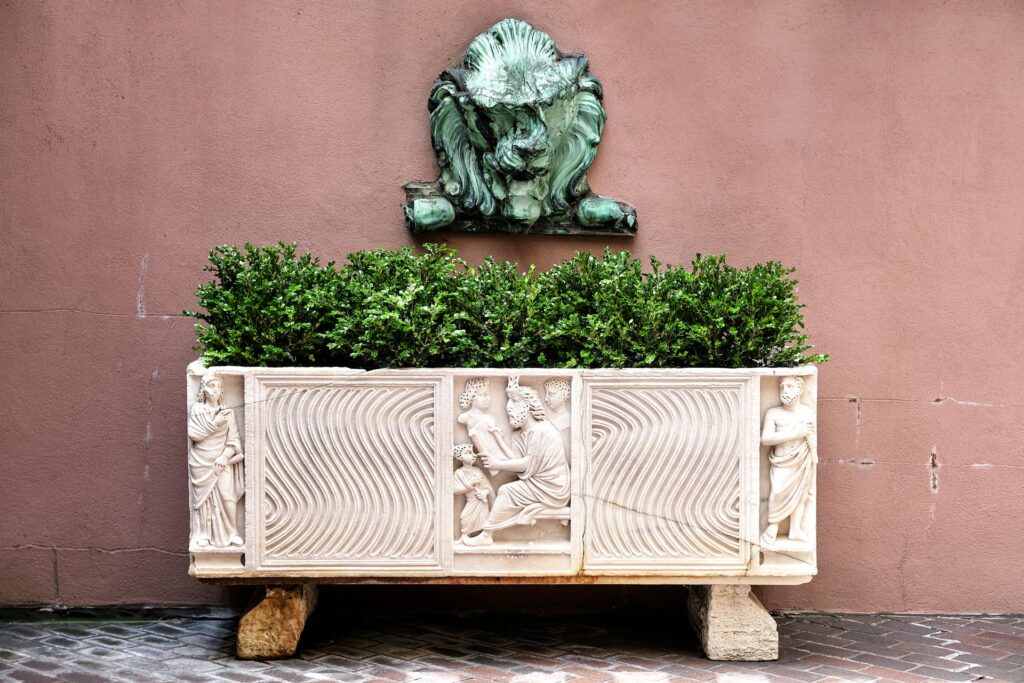
Hurricanes and tropical storms are a part of life in Florida, so preparing your garden containers for high winds and heavy rain is essential. For larger containers, consider securing them with ties or moving them to sheltered locations during storm warnings.
Self-watering containers are often quite sturdy, but it’s still wise to avoid leaving them in places where they might topple or get blown over, even if the reservoirs are full.
Frost Protection Methods
While frost is rare in Florida, it can still happen in the winter, especially in northern regions of the state. Plants in containers are more vulnerable to temperature changes than those in the ground, so it’s important to take protective measures.
To help prevent frost damage, you can move self-watering containers to more sheltered areas, such as under eaves or near walls that retain heat. Wrapping containers with frost-resistant material or covering them with a light fabric at night can also help.
For extremely cold nights, consider using heating cables or blankets designed for plants to offer additional protection. You can also move them into sheds, garages and even under large trees.
Consider moving particularly sensitive plants indoors for the night.
Size Guide for Different Plant Types
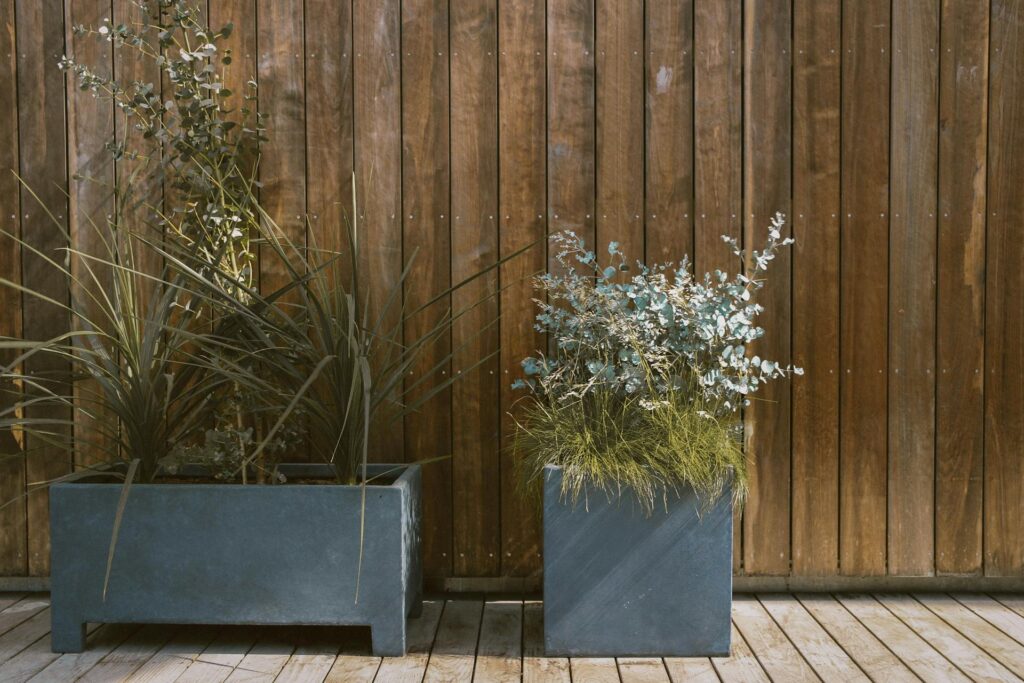
Choosing the right size container for your plants is essential to ensuring their health and productivity. In Florida’s diverse growing conditions, container size can have a significant impact on how well plants develop.
From herbs to trees, understanding each plant’s space needs will help you make the best selection for your garden. Here’s a breakdown of the ideal container sizes for different plant types:
Herb Container Requirements
Herbs tend to have shallow root systems and don’t require very large containers, but they still need enough space to grow and spread. A container that is at least 12 to 16 inches in diameter is typically sufficient for most herbs.
For a single herb like basil, parsley, or thyme, a smaller container may be adequate, but larger herbs like rosemary or oregano may need more space.
If you’re planting multiple herbs together in one container, look for a size around 18 to 24 inches in diameter to allow them to grow comfortably without overcrowding.
Vegetable Planter Sizing
Vegetables generally require more space than herbs to accommodate their deeper roots and larger growth habits. For most vegetables like tomatoes, peppers, or eggplants, a 5 to 10-gallon container (approximately 16 to 20 inches in diameter) is ideal.
Larger crops like squash or zucchini may need larger planters—15 to 20 gallons or even more. For root vegetables like carrots or potatoes, deeper containers with a minimum depth of 12 inches are necessary to allow for proper root development.
Be sure to choose a container that can handle both the root depth and the width required for healthy growth.
Flowering Plant Specifications
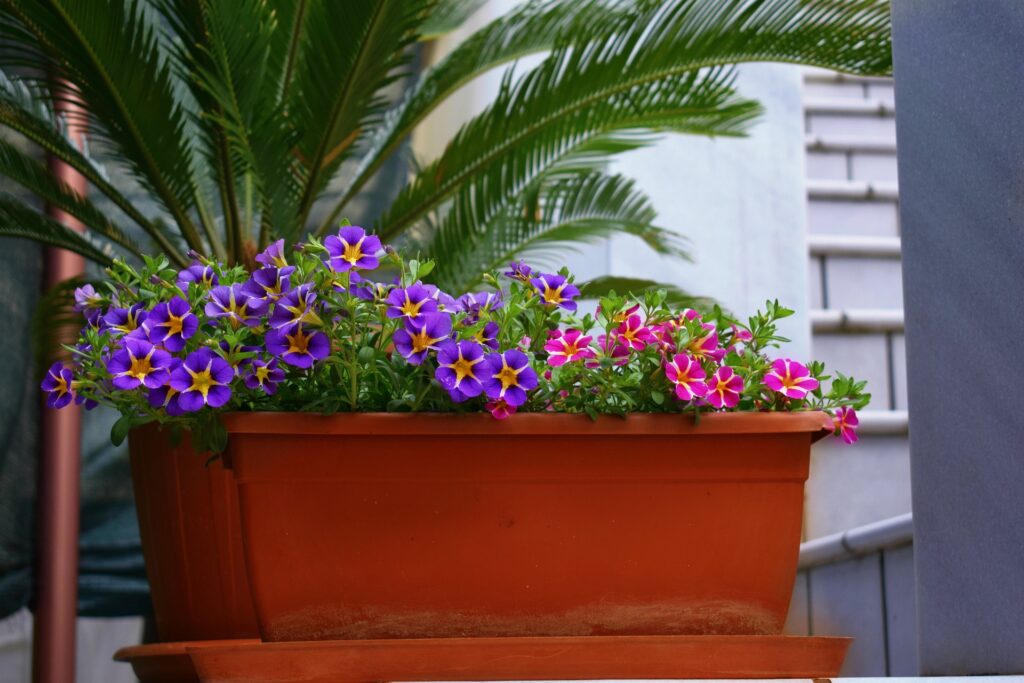
Flowering plants, especially annuals like petunias or marigolds, generally do well in medium-sized containers. A 10 to 14-inch container is typically large enough to accommodate flowering plants, but larger varieties or those with extensive root systems, like hibiscus or geraniums, may require 18 to 24 inches in diameter.
If planting perennials or flowers that will need to be in the same container for multiple years, consider opting for a larger size to ensure the roots have enough space to grow each season.
Consider the growth habit of the plant as well—vining plants like sweet peas or morning glories may require deeper containers to accommodate their trailing roots.
Tree and Shrub Container Needs
Trees and shrubs require the most space, as their root systems are larger and need more room to develop. A 15 to 30-gallon container (typically 24 to 36 inches in diameter) is necessary for small trees or large shrubs.
Larger trees may need even bigger containers to thrive in a container setting. For example, citrus trees, which are popular in Florida, do well in 20-gallon containers, while larger trees like palms or smaller fruit trees may need a 30-gallon container or more.
Always ensure the container is deep enough to support the full growth potential of the root system.
Mixed Planting Recommendations
When planting multiple types of plants together in one container, you’ll need to consider the size requirements of all the plants involved. For mixed plantings, choose a container that is at least 20-30 inches in diameter to ensure that the plants have enough space for root growth without competing for nutrients and water.
For instance, a combination of herbs, vegetables, and flowers might do well in a 24-inch diameter container or larger, with adequate depth to accommodate the varied root systems. Remember to group plants with similar water and light needs to ensure they thrive together in a shared space.
By selecting the right size container for each plant type, you can ensure that your Florida garden flourishes throughout the year. Always consider the mature size of your plants and the root space they’ll require to avoid overcrowding and poor plant health.
Maintenance and Care
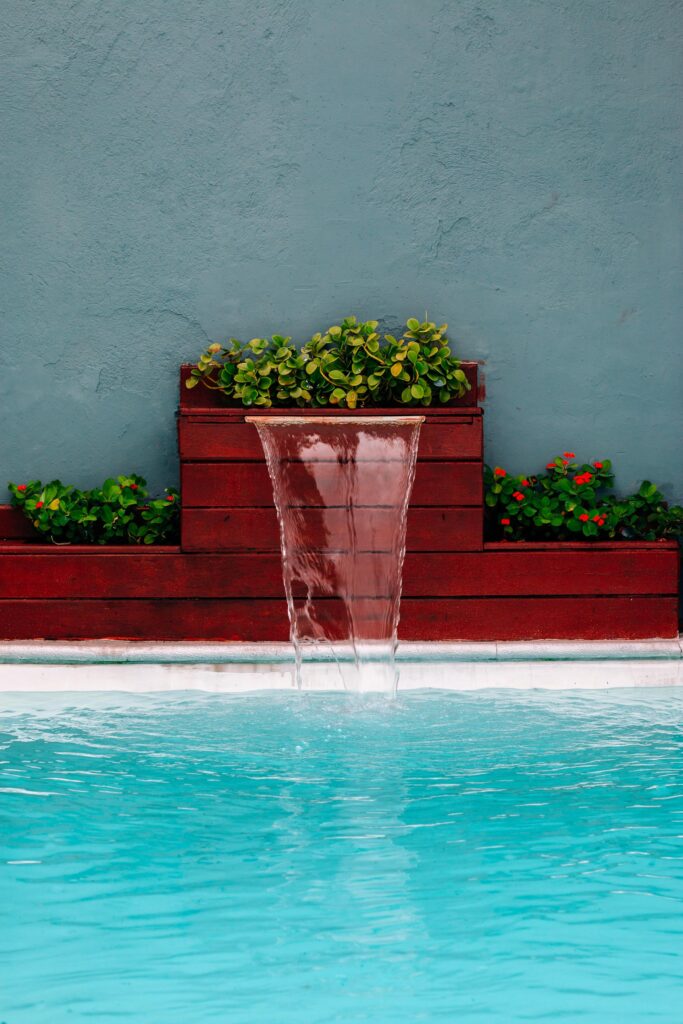
Proper maintenance and care are essential to ensuring that your self-watering containers continue to function effectively year-round. While these containers are designed to make gardening easier, a little attention goes a long way in keeping them in top condition.
Here are some key maintenance tasks for self-watering containers in Florida’s climate:
Cleaning and Sanitizing Procedures
To keep your self-watering containers functioning properly, it’s important to clean them regularly. Over time, dirt, algae, and mineral buildup can accumulate in the water reservoir and wicking system, which can affect water flow and plant health.
Begin by emptying the container and removing any plants. Use a mild soap solution or a 10% bleach solution to clean the container thoroughly, scrubbing all surfaces, including the water reservoir, the wick, and any drainage holes.
Be sure to rinse thoroughly to remove any soap or bleach residue, as they may harm plants. Clean your containers at least once every season, or more often if you notice algae or mold growth.
Winterizing Techniques
During Florida’s occasional cold snaps, it’s important to protect your self-watering containers from potential damage caused by frost or freezing temperatures. While Florida’s winter conditions are usually mild, it’s still wise to take precautions.
If you’re growing more frost-sensitive plants, move containers to a sheltered spot or cover them with frost cloth or blankets. For the containers themselves, you may want to store them in a dry, sheltered area if possible.
For those left outdoors, ensure that the drainage holes are not blocked, as trapped water can freeze and damage the container. Additionally, empty out any excess water from the reservoir to avoid freezing and cracking.
Reservoir Adjustment Guidelines
Proper reservoir management is crucial to maintaining healthy plants, especially during Florida’s hot summer months when containers can dry out quickly. Regularly check the water level in the reservoir and refill as needed, making sure to only fill it to the recommended level to prevent overflows.
During the rainy season, you may need to adjust the water reservoir levels to account for heavy rainfall, which can lead to waterlogging. In these cases, ensure that the overflow system is working properly and consider temporarily reducing the water in the reservoir if necessary.
In drier months, be mindful of evaporation and replenish the reservoir as needed to maintain consistent moisture levels.
Filter Maintenance
Many self-watering containers come equipped with filters to keep the water reservoir free from debris and to help with proper drainage. These filters should be checked and cleaned regularly to ensure that the system remains efficient. Use a soft brush or sponge to clean the filter, removing any accumulated dirt or organic material.
In some cases, filters may need to be replaced every season or sooner if they become clogged beyond cleaning. Regular filter maintenance will help ensure that your self-watering system continues to deliver clean, effective moisture to your plants.
Self-Watering Container Installation and Setup
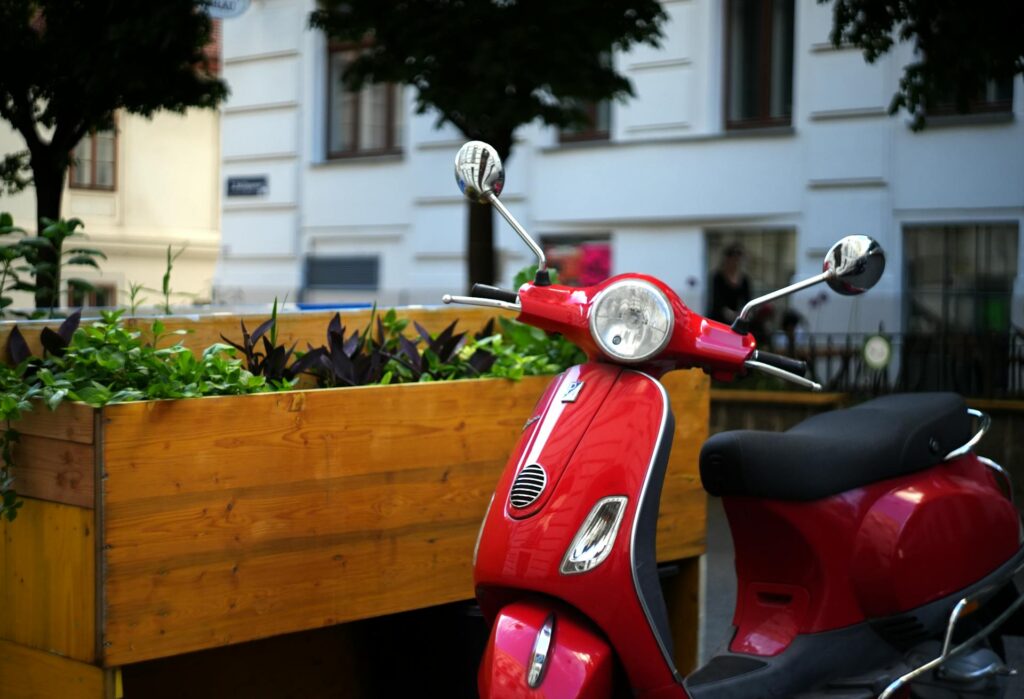
Setting up your self-watering container correctly from the start will help ensure its effectiveness and longevity. While these containers are designed for ease of use, following the right installation procedures can significantly improve the growing conditions for your plants.
Here’s a step-by-step guide to getting your self-watering container ready for planting.
Location Selection Guidelines
Choosing the right location for your self-watering container is essential for plant health. For Florida gardeners, this means considering the amount of sunlight your plants need, as well as the protection from the elements.
Self-watering containers should be placed in an area that receives adequate sunlight based on the plants you’re growing. Most vegetables and flowering plants require at least 6-8 hours of direct sunlight, while herbs and leafy greens may tolerate partial shade.
Additionally, if you’re using the containers on a balcony or patio, ensure they are on a flat, stable surface to prevent tipping.
Initial Setup Procedures
The first step in setting up your self-watering container is ensuring the bottom of the container is prepared for the water reservoir system.
Many self-watering containers come with a built-in water reservoir that needs to be filled properly before planting. Start by placing the container in its designated spot and checking that it’s level.
If the container has a built-in wick or water reservoir, ensure it is correctly positioned to allow water to move from the reservoir into the soil. If the container has an overflow valve, double-check that it’s free of debris and working correctly to prevent waterlogging.
Once your container is in place and level, fill the reservoir with water to the recommended level, but avoid overfilling.
Water Level Monitoring Systems
Self-watering containers often include a built-in water level monitoring system, allowing you to keep track of the moisture in the reservoir. These systems can come in the form of a simple water level indicator or more sophisticated sensors.
Regularly monitor the water level to make sure the plants are getting the right amount of moisture. Most containers feature a visual indicator that will show you when the water reservoir is low and needs to be refilled.
In Florida’s hot climate, you may need to check the water level more frequently during the summer months, as evaporation rates can be high. Adjusting the water level as needed will help keep your plants healthy and thriving.
Drainage Modifications
While self-watering containers typically have built-in drainage systems, there may be times when additional modifications are needed, especially during Florida’s rainy season.
Make sure the drainage holes at the bottom of the container are unobstructed to allow excess water to escape and prevent root rot. If you notice that the container isn’t draining properly, consider adding small pebbles or gravel to the bottom of the reservoir to prevent clogging.
Soil Mixture Recommendations
The right soil mix is key to the success of your self-watering container. For most plants, you’ll want a soil blend that is lightweight, well-draining, and moisture-retentive.
A good base soil mixture should consist of equal parts of potting soil, compost, and perlite or vermiculite. This combination allows for optimal moisture retention without becoming too compact, which can restrict root growth.
If you’re growing vegetables or flowers, it’s especially important to ensure that the mix drains well, as these plants are sensitive to waterlogged roots. Avoid using regular garden soil, as it can be too heavy and may clog the water wicking system.
For herbs, you may prefer a slightly drier, more sandy mix, as many herbs don’t tolerate overly moist conditions.
Troubleshooting Common Issues
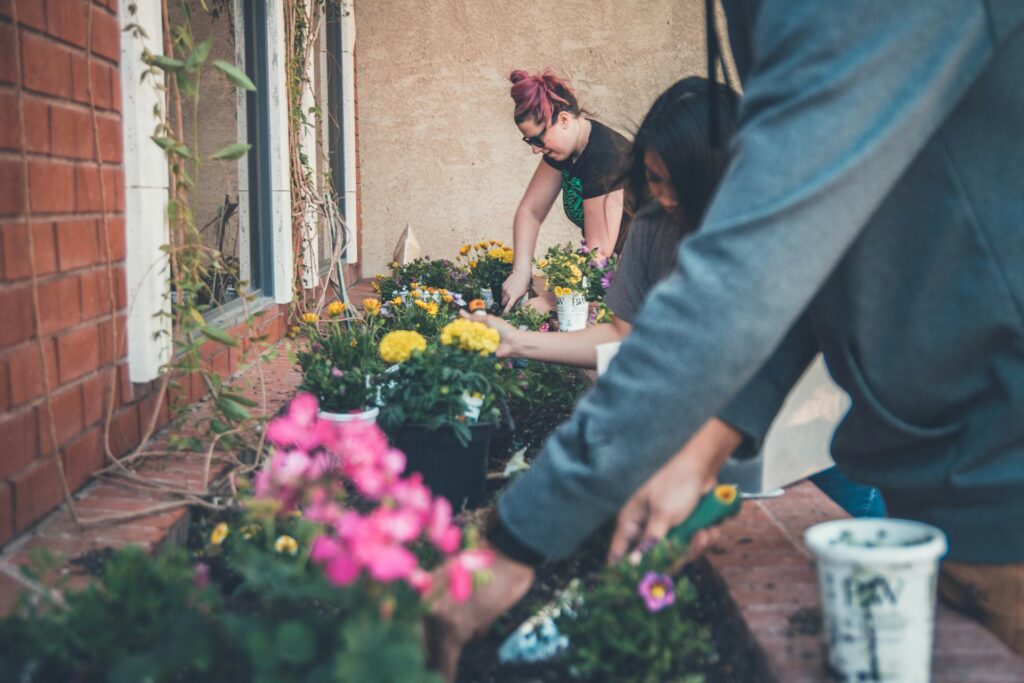
Even with the best self-watering containers, issues may arise from time to time. Knowing how to address these challenges can help ensure the health and longevity of your plants. Here’s a guide to troubleshooting common problems that Florida gardeners might face with their self-watering containers.
Dealing with Algae Growth
Algae growth is a common issue in self-watering containers. Algae can develop on the surface of the water reservoir or even in the soil if the conditions are right.
While algae itself isn’t usually harmful to plants, it can promote the growth of unwanted pests and block sunlight from reaching the soil.
To prevent algae growth, regularly clean the container, especially the water reservoir. If you notice algae on the surface, scrub it off with a mild soap solution or a mixture of water and vinegar.
Additionally, ensure your container is placed in a location with proper airflow to prevent excess humidity, which can contribute to algae buildup.
Preventing Root Rot
Root rot is a serious issue that occurs when plant roots become waterlogged and suffocate due to poor drainage. While self-watering containers are designed to prevent this, it can still happen if the drainage system becomes clogged or the water reservoir is overfilled.
To prevent root rot, make sure your container has adequate drainage, even if it’s a self-watering model. Check the drainage holes regularly and ensure they are free from debris.
Managing Overflow Problems
Overflow can occur if your self-watering container is receiving more water than it can handle, either due to heavy rain or incorrect watering habits. Most high-quality self-watering containers are designed with overflow systems to prevent this, but occasionally they can get blocked or malfunction.
If you find your container is overflowing during a rainstorm, check that the overflow hole is clear of dirt and debris. If needed, gently tilt the container to allow excess water to drain. Additionally, ensure that the water reservoir is not filled beyond the recommended level to prevent spillage.
For added protection during heavy rain, you may also want to move your container to a sheltered spot, such as under a porch or overhang.
Handling Extreme Heat
Florida’s intense summer heat can be a challenge for self-watering containers. Extreme heat can cause the soil to dry out more quickly, especially if the container is placed in full sun.
To manage heat stress, consider moving your container to a location that provides some afternoon shade or using a reflective material to shield the container from the sun. It’s also a good idea to check the water reservoir more frequently during heatwaves, as the plants may consume more water.
Additionally, adding mulch to the top of the soil can help retain moisture and keep the roots cool. Be sure not to overfill the reservoir in an attempt to keep the plants hydrated; the self-watering system is designed to deliver water as needed, and too much water can lead to other issues like root rot.
Use Self-Watering Containers to Elevate Your Florida Garden
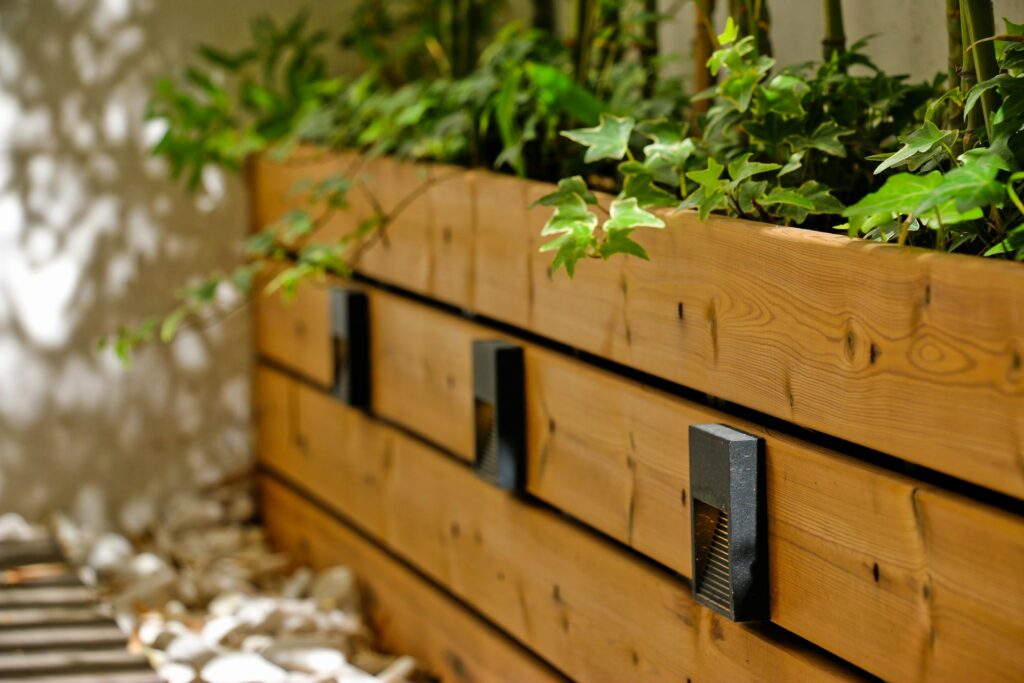
Self-watering containers are an excellent investment for Florida gardeners, offering a convenient and efficient way to manage watering needs, especially considering our persistant hot and sunny weather. With the right container, you can enjoy healthier plants with less effort, whether you’re growing herbs, vegetables, or flowers.
From UV-resistant materials to thoughtful design features like overflow drainage and adjustable reservoirs, these containers are built to withstand Florida’s unique climate challenges. However, it’s important to choose the right size, style, and features for your specific garden needs, ensuring your plants receive the best care possible.
While high-quality self-watering containers can be pricey, there are ways to stay within your budget without sacrificing performance. By carefully considering your needs and shopping around for deals or even building your own container, you can enjoy the benefits of self-watering gardening without breaking the bank.
Whether you’re a seasoned gardener or just starting out, these containers can simplify your gardening experience, and with a little research and planning, you’ll be able to find a solution that works for both your plants and your wallet. Happy gardening!












